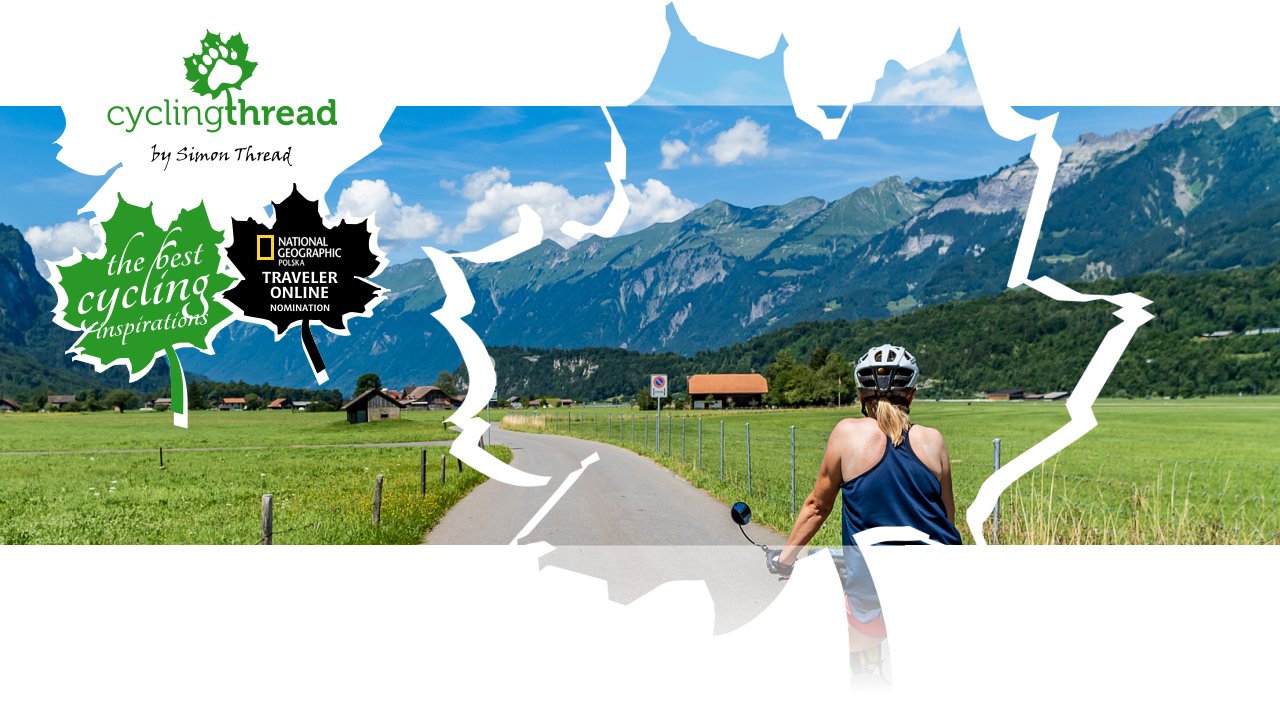
Exploring the Swiss Alps. Cycling the Lakes Route in Switzerland
Switzerland from a postcard - this is how the official website presenting Swiss cycling routes describes the Lakes Route and its attractions. And it truly is a perfect summary of the over 500-kilometer route that, apart from showcasing ten stunning Swiss lakes, also takes you to the picturesque Werdenberg, the beautiful Lucerne under the iconic Mount Pilatus, the uniquely located Iseltwald on the shores of Lake Brienz, the land of the famous Gruyère cheese, and the UNESCO-listed Lavaux vineyards by Lake Geneva. In our interpretation of the cycling Lakes Route, we also included Zurich and Lausanne, which served as the starting and finishing points of our scenic tour through Switzerland.
Route on the map
GPX file (GPS track): cyclingthread.com-switzerland-2022.gpx
Lakes Route in Switzerland - table of contents
- Nine national cycling routes in Switzerland
- On a handbike along a Swiss cycling route
- Lake Zurich instead of Lake Constance
- Two days in surprising Zurich
- The Swiss National Museum for those curious about the country...
- ...and a lakeside beach for residents
- Regional route no. 94 to the Lakes Route
- The popular expat town of Zug
- Exceptional Swiss cycling routes
- Lucerne - the most beautiful city in Switzerland
- The fantastic Swiss Museum of Transport
- Along the lake with views of Pilatus
- Climbing between the lakes
- A gradient of several percent is a real challenge for cyclists
- The waterfall where Sherlock Holmes met his fate
- A 1.5-kilometer walk through the Aare Gorge
- Traditional rösti with egg for dinner
- Postcard-perfect Switzerland by Lake Brienz
- The charm of Iseltwald
- Between the lakes, as the town's name suggests
- A special red lane for cyclists
- The world's longest staircase race
- A hotel with views of Lake Thun
- Cycling in Swisstainable style
- Traditional wooden houses in the Simme Valley
- Cyclist, choose your climb
- Madonna and Polanski in Alpine Hollywood
- Rougemont among Switzerland's most beautiful villages
- A night in Swiss agritourism
- No cyclist-friendly places in Switzerland
- The ballooning capital of Switzerland - Château-d’Oex
- A stop on the flagship Grand Tour of Switzerland
- French to the left, German to the right
- Birthday fondue with Gruyère cheese
- Gruyères - castles, aliens, and the Tibet Museum
- Even the best routes have weak links
- A stunning cycling route through extraordinary vineyards
- The three suns of Lavaux vineyards
- Olympic Lausanne - the perfect finale
- The Olympic Museum in the global capital of sports
- Six days aren’t enough for the Lakes Route
- Rhine Route, Lakes Route, Jura Route…
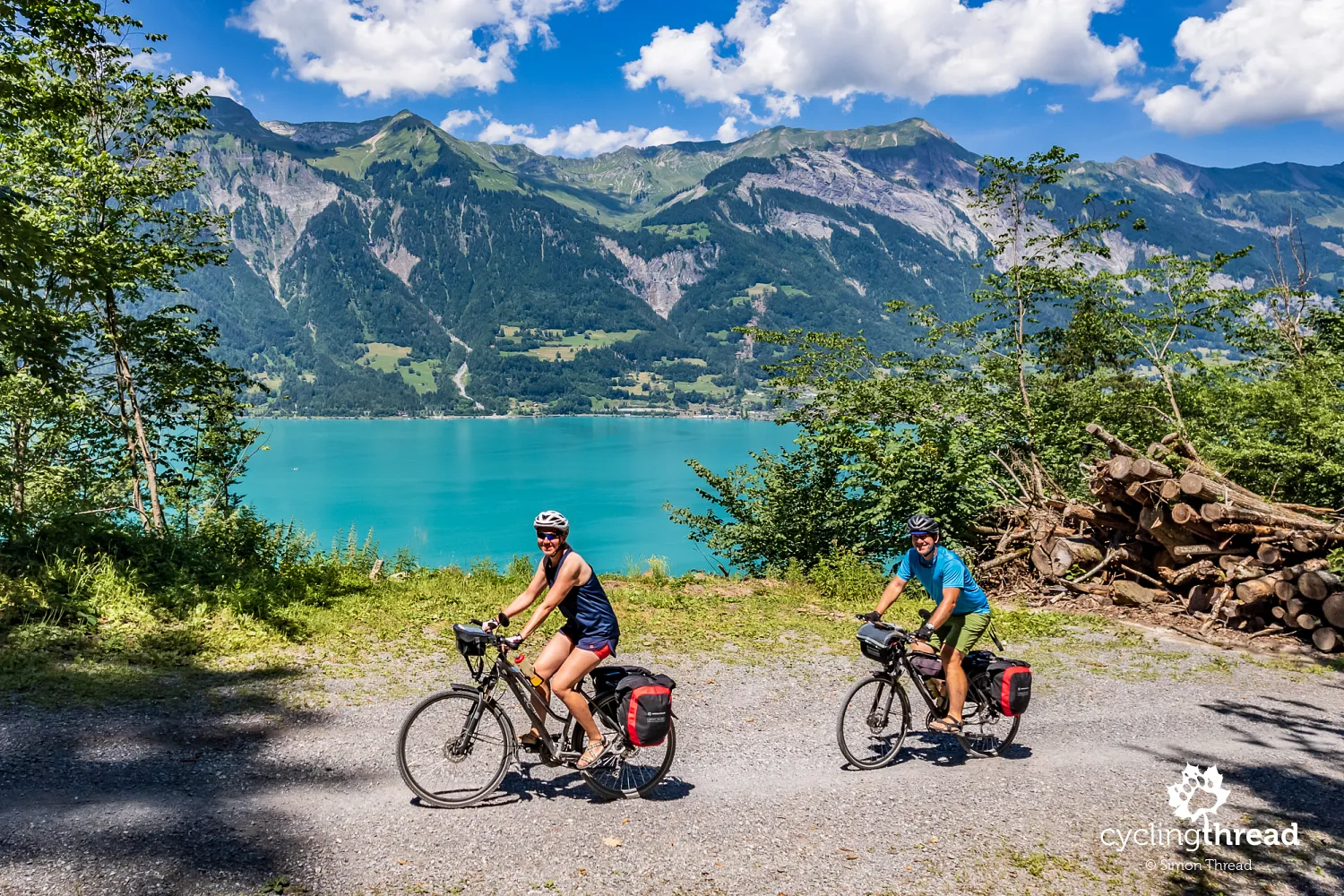
Nine national cycling routes in Switzerland
The Lakes Route (Seen-Route) is one of the nine main national cycling routes in Switzerland. These routes span between 250 and 500 kilometers and traverse all regions of the country. From this national selection, we’ve already cycled the Rhine Route (number 2 on the list), the Lakes Route described here (number 9), and the Jura Route (number 7), which we took right after completing the Lakes Route. Swiss cycling routes, divided into national, regional, and local, are presented on the Switzerland Mobility (Schweiz Mobil) website. It provides basic details about the length and difficulty of each route, maps, elevation profiles, daily stage descriptions, and even a dedicated app. This set of nine routes is an excellent starting point for planning a cycling adventure in Switzerland, even for the pickiest cycling tourists. However, it’s worth noting that only three of these routes are relatively easy, as they follow rivers - namely, the Rhine Route, the Rhone Route, and the Aare River Cycling Route.
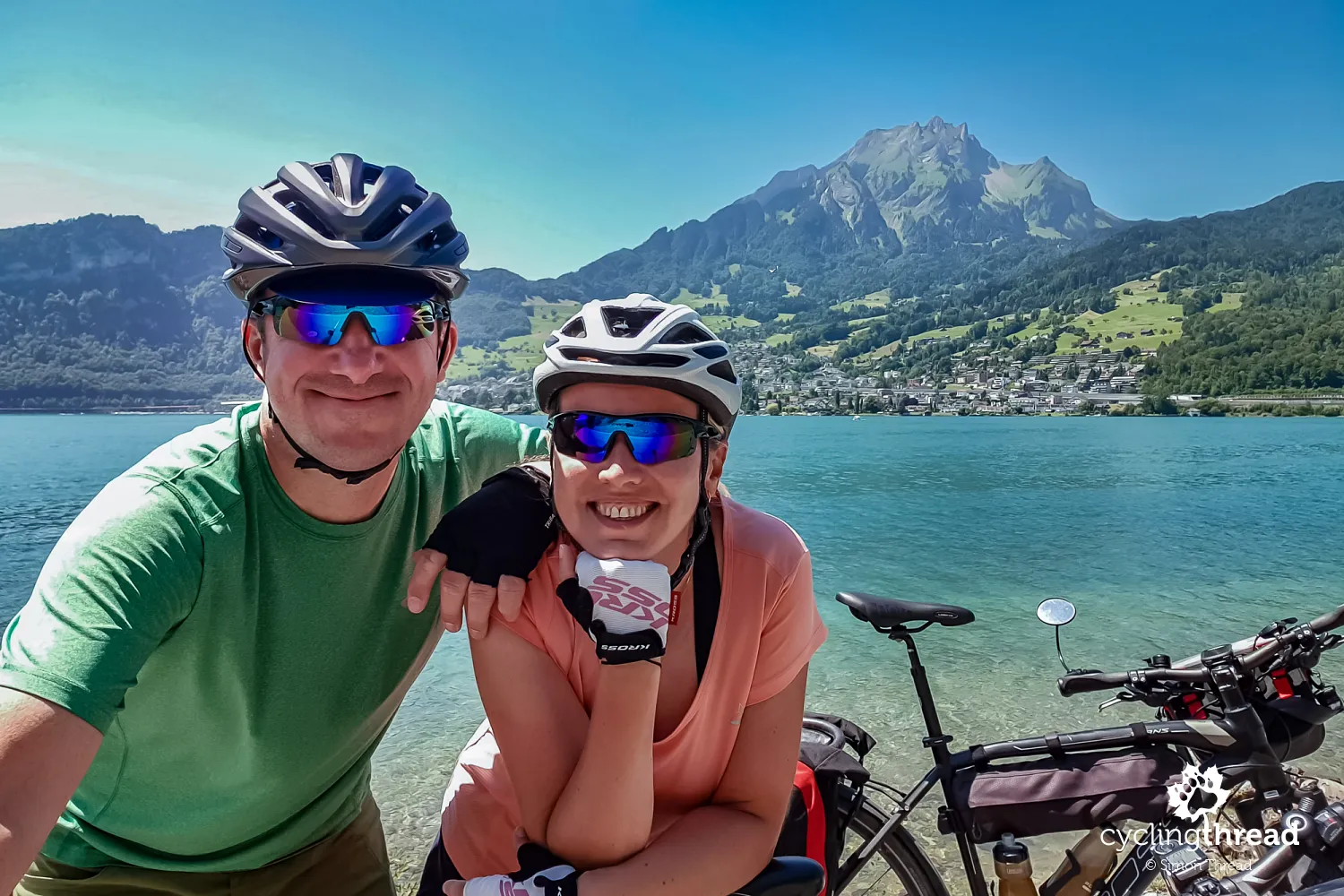
On a handbike along a Swiss cycling route
Although most Swiss cycling routes require moderate physical fitness due to the country’s terrain, their advanced approach to organizing cycling tourism definitely makes the journey easier. Somewhere in the Simme Valley, I took a striking photo that perfectly answers the question of how cycling routes should be designed. Some gravel sections of the Swiss Lakes Route are accessible even to those using a handbike - a hand-propelled wheelchair likely used by individuals with limited mobility. This highlights the key to successful cycling tourism: ensuring accessibility not only for able-bodied adults but also for seniors, parents with children, people with disabilities, and even cargo bike users, regardless of the surface type. This level of thoughtful cycling tourism is what I strive to showcase in our travel accounts and hope to see widely implemented in Europe.
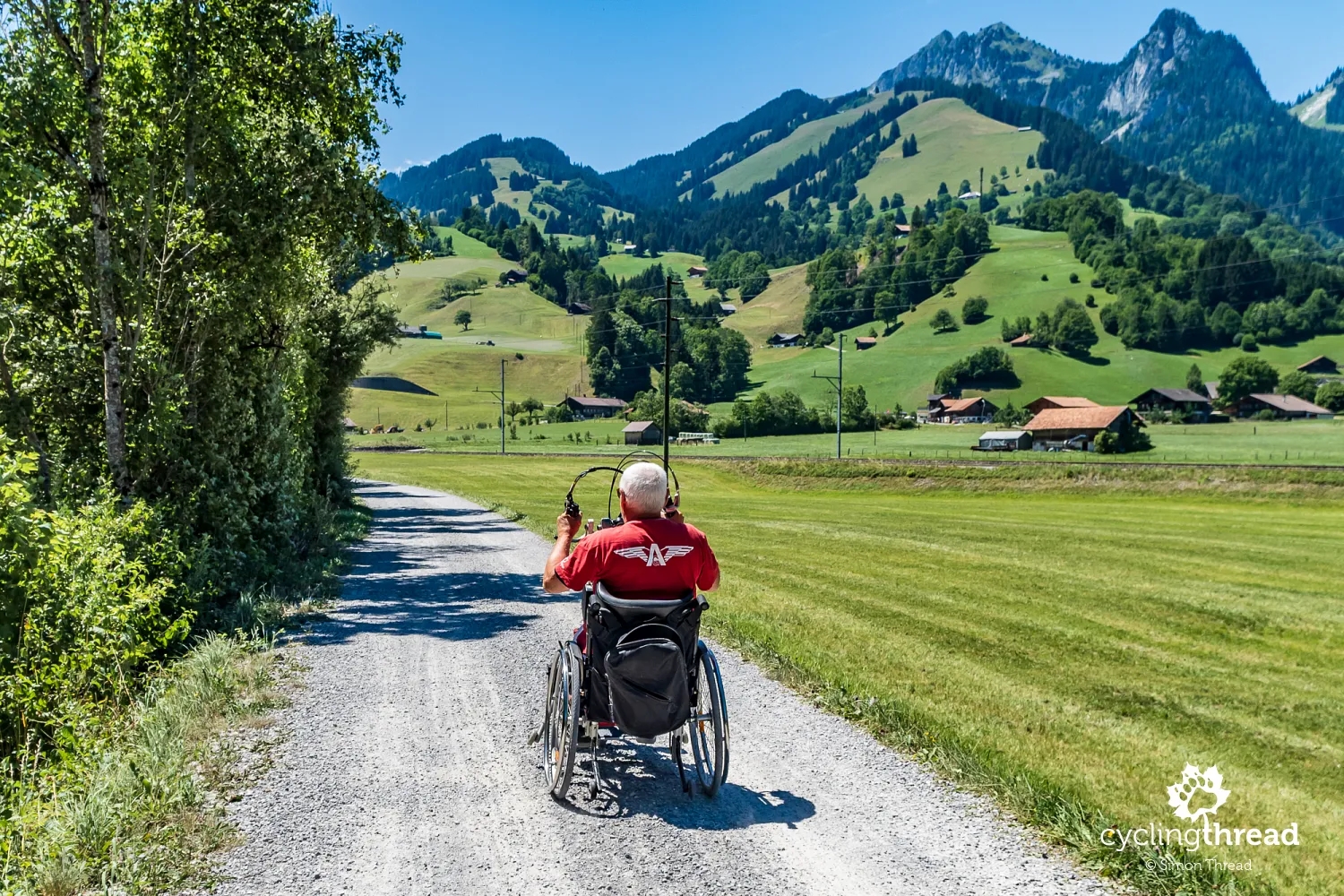
Lake Zurich instead of Lake Constance
Since the initial section of the Lakes Route overlaps significantly with the Rhine Route we had already cycled, and we aim to avoid retracing our steps, we began our journey in Zurich by Lake Zurich, just about 25 kilometers from the Lakes Route. This adjustment allowed us to explore Zurich and avoid covering already familiar terrain. To clarify, the skipped initial section of the route is highly scenic and definitely worth cycling if you haven’t yet discovered this area. It initially follows the shores of Lake Constance, crosses the Rhine Delta, then runs through the wide Alpine Rhine Valley, and finally visits four Alpine lakes, including the southern tip of Lake Zurich. This adds approximately 200 kilometers to the route, so the entire Lakes Route would require about eight cycling days instead of the five-day version described here.
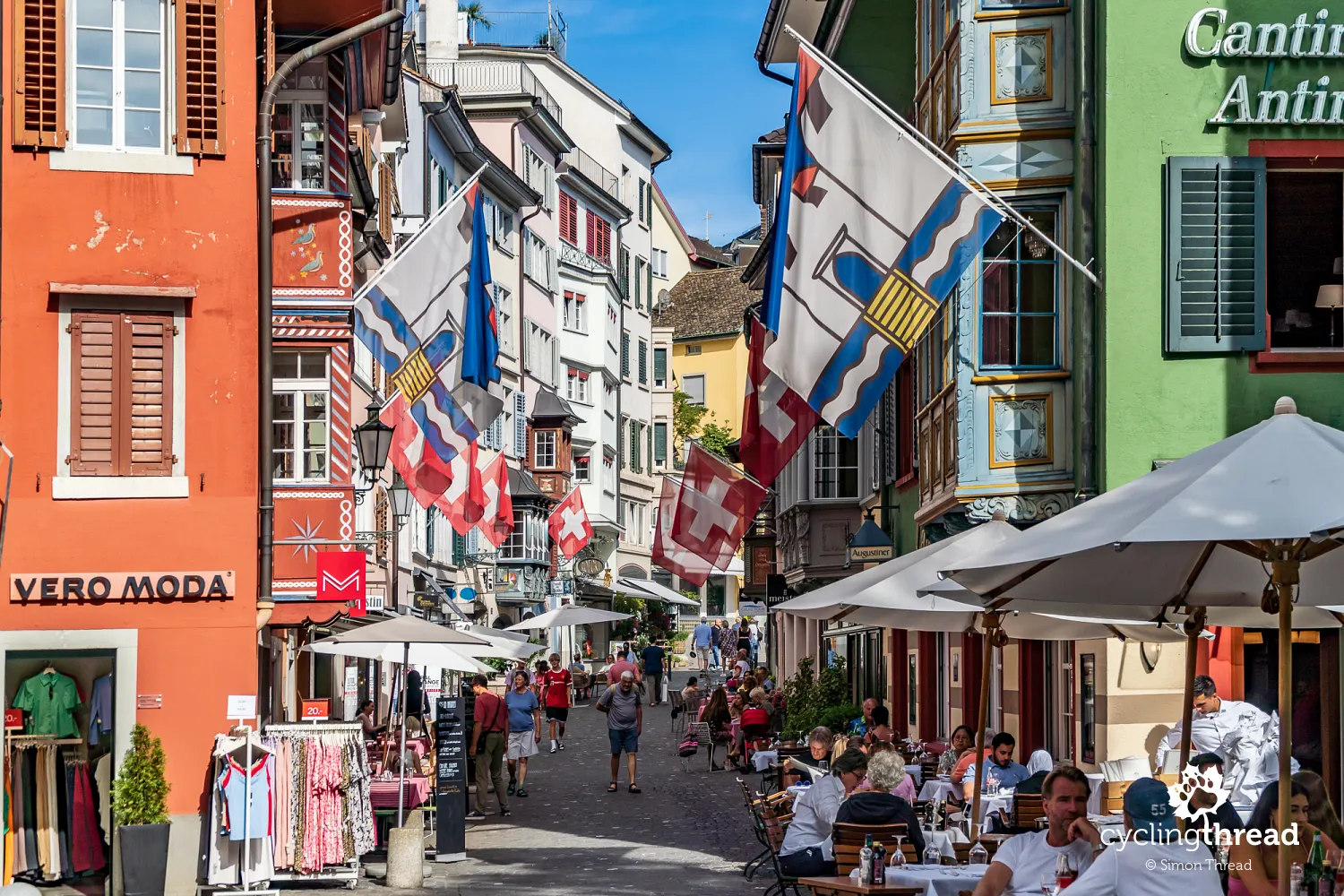
Two days in surprising Zurich
Zurich welcomed us with an unexpected surprise - its topography. The route to the apartment we rented for two days, which seemed easy and short on the map, turned into an evening climb through city switchbacks, with nearly 100 meters of elevation gain between the train station and the University District. It never occurred to me to expect inclines like those in San Francisco in the heart of a European city. However, the morning view from our balcony made it all worthwhile - we overlooked Switzerland’s largest urban complex surrounded by hills. Thousands of offices in the country’s financial hub were coming to life as we enjoyed holiday coffee on our balcony. Across from us was Uetliberg Mountain (just out of view) with its popular observation tower, accessible via the Uetlibergbahn mountain railway. In the distance, hundreds of yachts and boats swayed on Lake Zurich’s waters. Soon, the lakeside would be bustling with Zurich residents enjoying summer, some of whom would later gather on the rooftops of nearby buildings converted into unique club terraces.
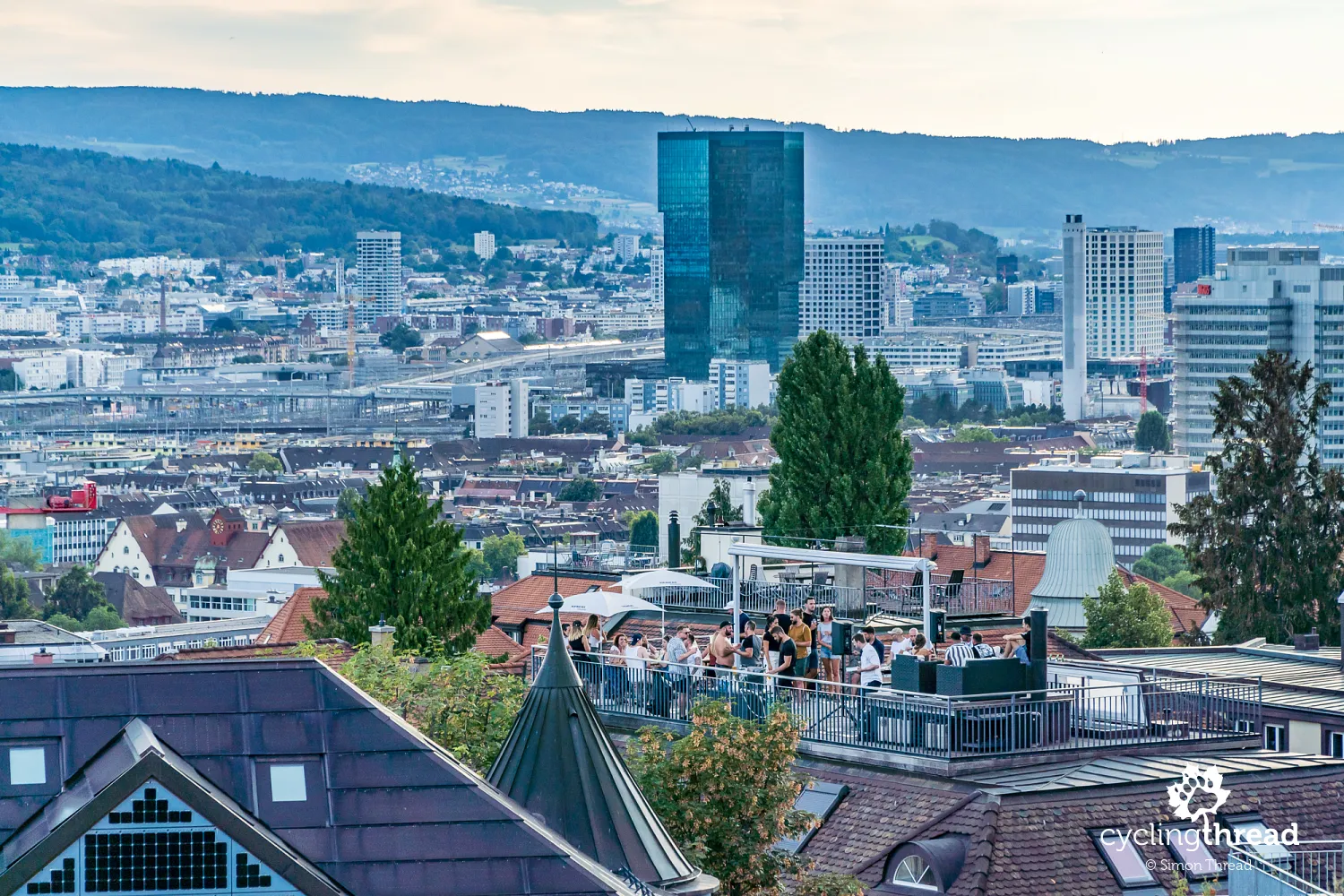
The Swiss National Museum for those curious about the country...
For our first stay in Zurich, we chose the Swiss National Museum, located next to the train station. Among the permanent exhibitions are “The History of Switzerland,” “Ideas of Switzerland,” and “Simply Zurich,” all of which perfectly complemented our route. The museum doesn’t overwhelm with exhibits, and the displays concisely and effectively explain various topics. I’ve long felt that the Swiss understand that today’s museum visitors rarely seek multi-hour engagements and that a condensed presentation of knowledge aids retention and enhances visitor satisfaction. From the Swiss National Museum, I took away memories of Guillaume Henri Dufour, a 19th-century engineer and military officer who was one of the five founders of what is now the International Red Cross and Red Crescent Movement, as well as a cartographer. Under his initiative, Switzerland’s first topographic map was created in the mid-19th century. The shading technique used to enhance terrain features was so excellent that Dufour’s map is considered a monumental work in European cartography.
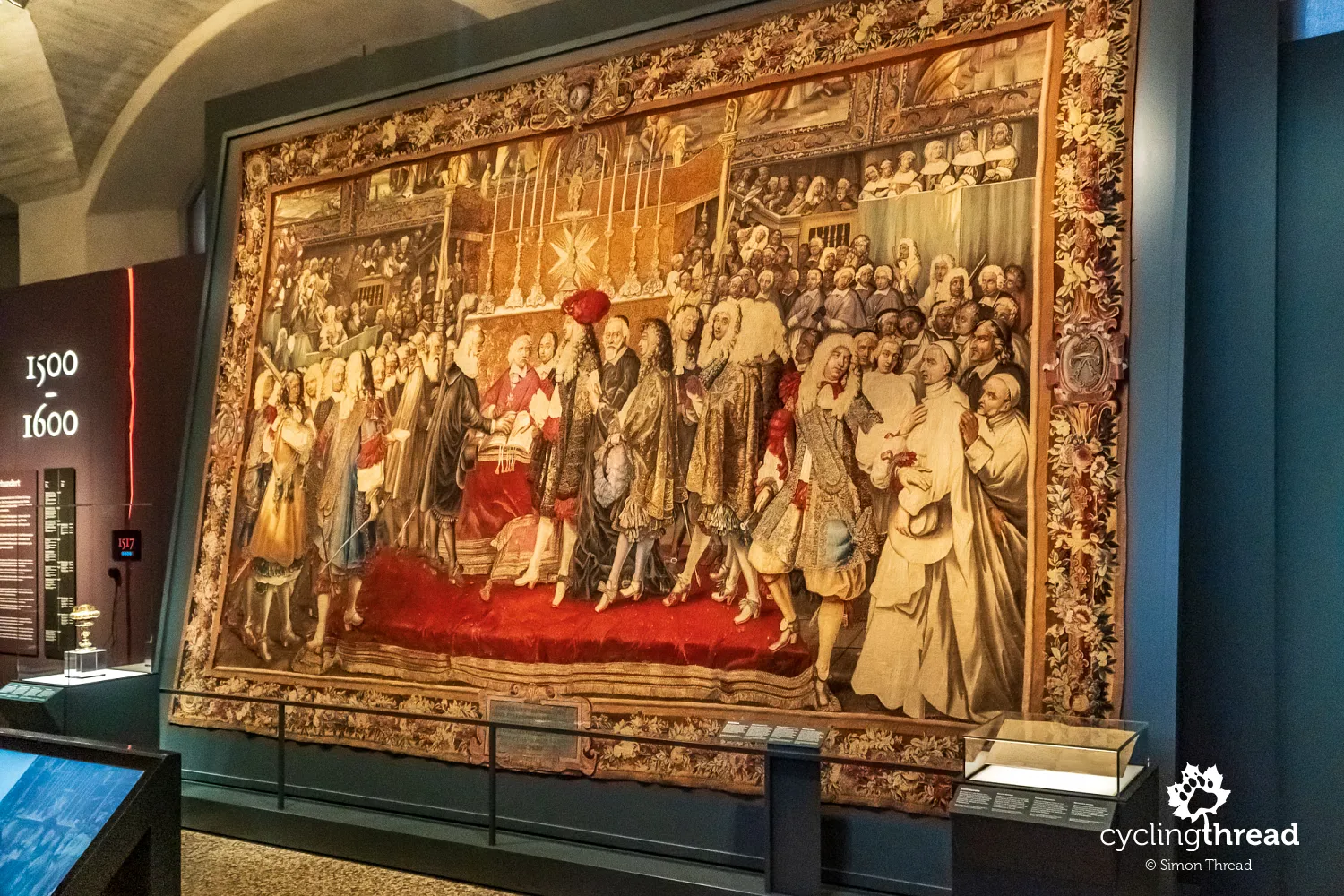
...and a lakeside beach for residents
Zurich’s Old Town feels slightly different from what one might typically associate with historic city centers. Perhaps it’s just too well-maintained to evoke the usual sense of “old” urban fabric. Highlights include the Renaissance town hall, Grossmünster - a Romanesque church significant to the Reformation - and the iconic streets and alleys like Bahnhofstrasse and Augustinergasse, which are best explored by bike or on foot where cycling isn’t permitted. We thoroughly enjoyed soaking up Zurich’s summer vibe, which dominated the beaches and swimming areas by Lake Zurich. The waterfront spaces catered beautifully to the diverse needs of both residents and possibly tourists. Some swam and later rested on piers anchored far from the shore. Others, often in groups of friends, sunbathed on the sprawling green lawns lining the lake. Still, others relaxed under umbrellas at numerous cafes and restaurants, often sipping a signature orange summer drink served in characteristic round glasses.
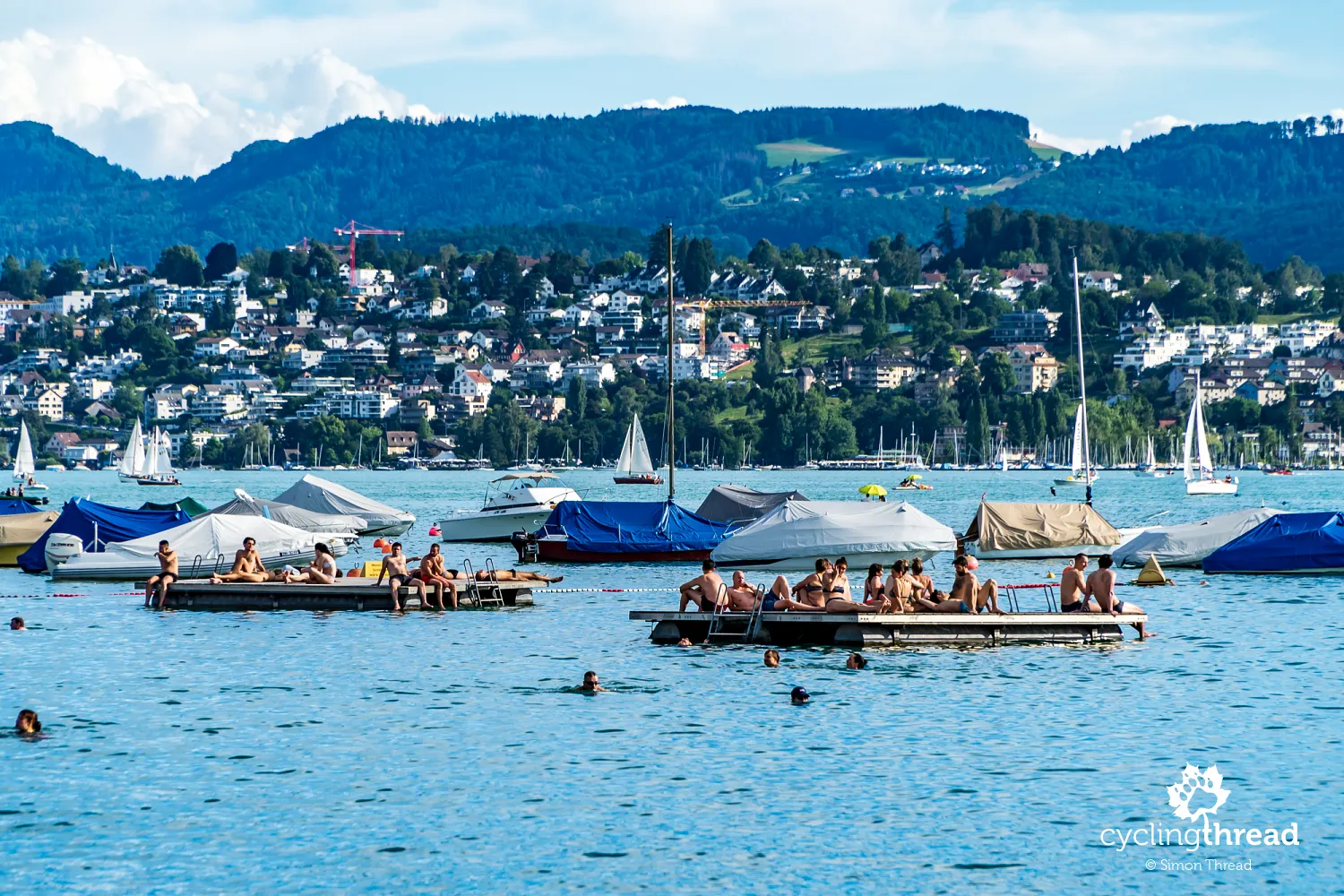
Regional route no. 94 to the Lakes Route
The first 25 cycling kilometers toward the Lakes Route followed the Sihl River along regional cycling route no. 94, which begins near the train station. We must have hit a popular path because many Zurich residents, often with their families, headed in the same direction for a Sunday outing. For most of this stretch, the route ran directly alongside the river, even within Zurich. Later, it sheltered cyclists from the strong sun under the dense forest covering the valley. Even this short ride showed us that Switzerland’s regional “double-digit” cycling routes can also be well-prepared, attractively designed, and correctly marked. Additionally, we climbed the first 200 meters of elevation pleasantly, almost imperceptibly, while enjoying the greenery of nature.
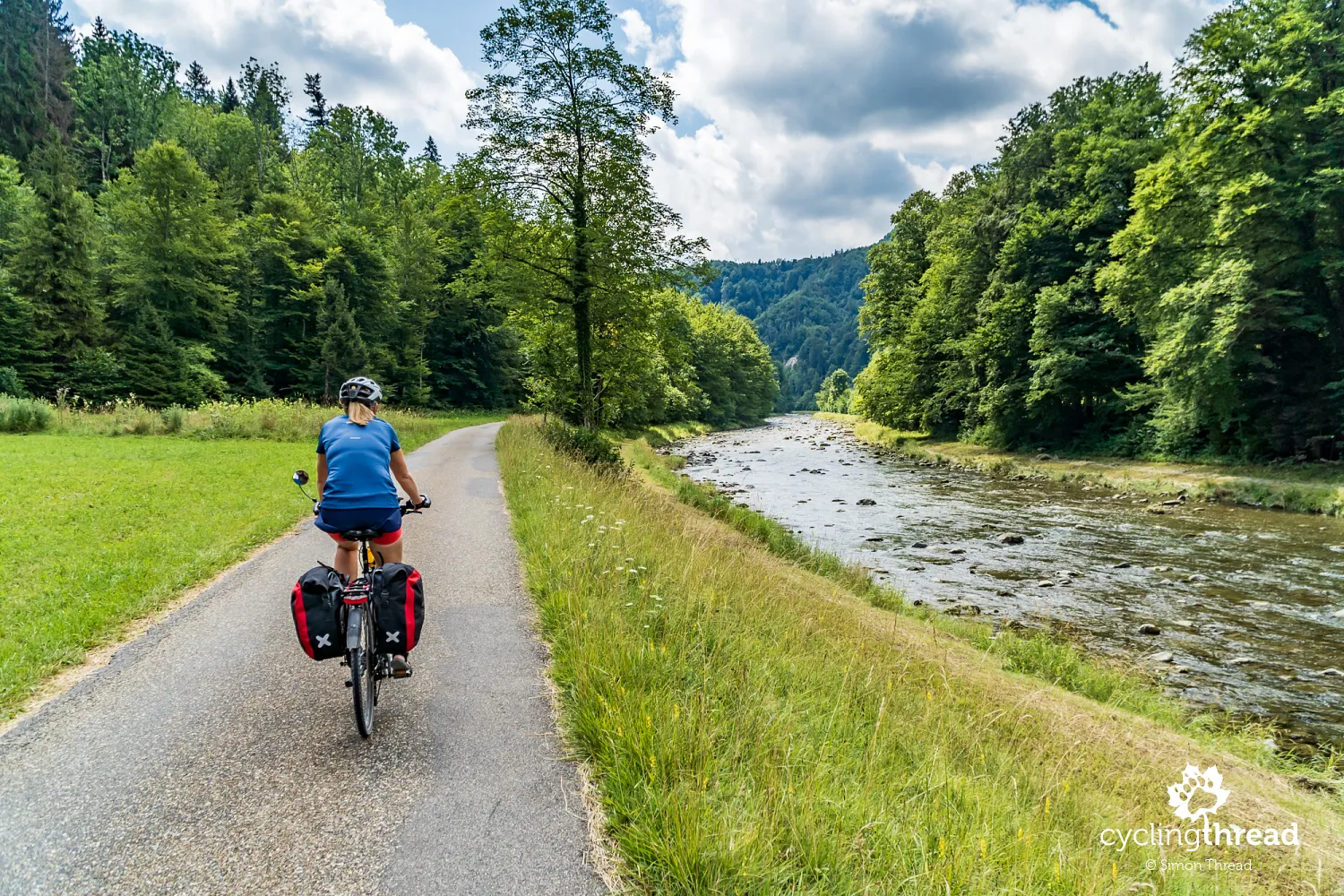
The popular expat town of Zug
On our way to Lucerne, we stopped in Zug, a town by the lake of the same name. In the narrow streets of the old town, we searched for a view of Zytturm, a distinctive 14th-century tower. Once a city gate and defensive structure within the town's fortifications, it is now a symbol of the town, adorned with a clock. A great spot to look over Zug is Guggi, a small hill in the city center, which is a remnant from the construction of the Gotthard Tunnel in the late 19th century. However, the true landmark of the town is its modest castle, dating back to the 11th century, which now houses a historical museum. Despite its unassuming appearance, Zug enjoys significant popularity among expats, as evidenced by its top ranking among Swiss cities in global lists in recent years. Foreigners particularly appreciate Zug for its famously low taxes and proximity to the Alps, a highly appealing recreational area.
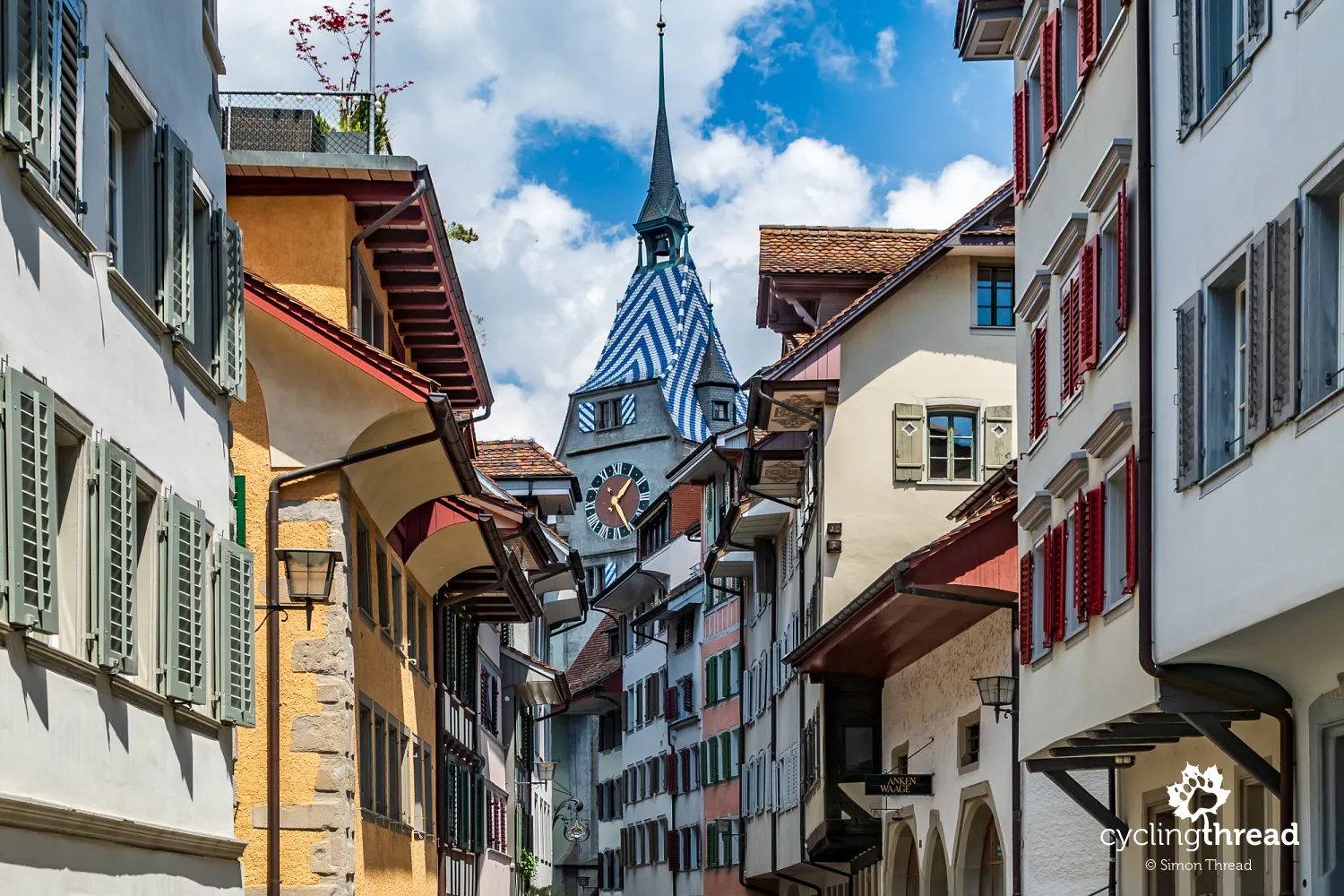
Exceptional Swiss cycling routes
Between Zug and Lucerne, we discovered what the Lakes Route would offer us in the coming days. Pale blue signs marked with a cycling [9] guided us either along quiet, narrow public roads used primarily by local residents accustomed to cyclists or along paths restricted to cyclists and pedestrians. The surfaces ranged from asphalt to smooth, compact gravel. The signage was flawless - clear and present exactly where it was needed. Just before Lucerne, we even found ourselves lamenting Switzerland's meticulous orderliness; a scenic pedestrian trail ran directly along the emerald waters of the Reuss River, while cyclists were directed to a parallel road a few dozen meters away, unfortunately hidden behind a curtain of trees. Moments later, I asked Ola to take a commemorative photo under a cluster of cycling signs grouped in one spot, and shortly afterward, we joined an appealing mixed-use path along the river, which led us into the heart of Lucerne.
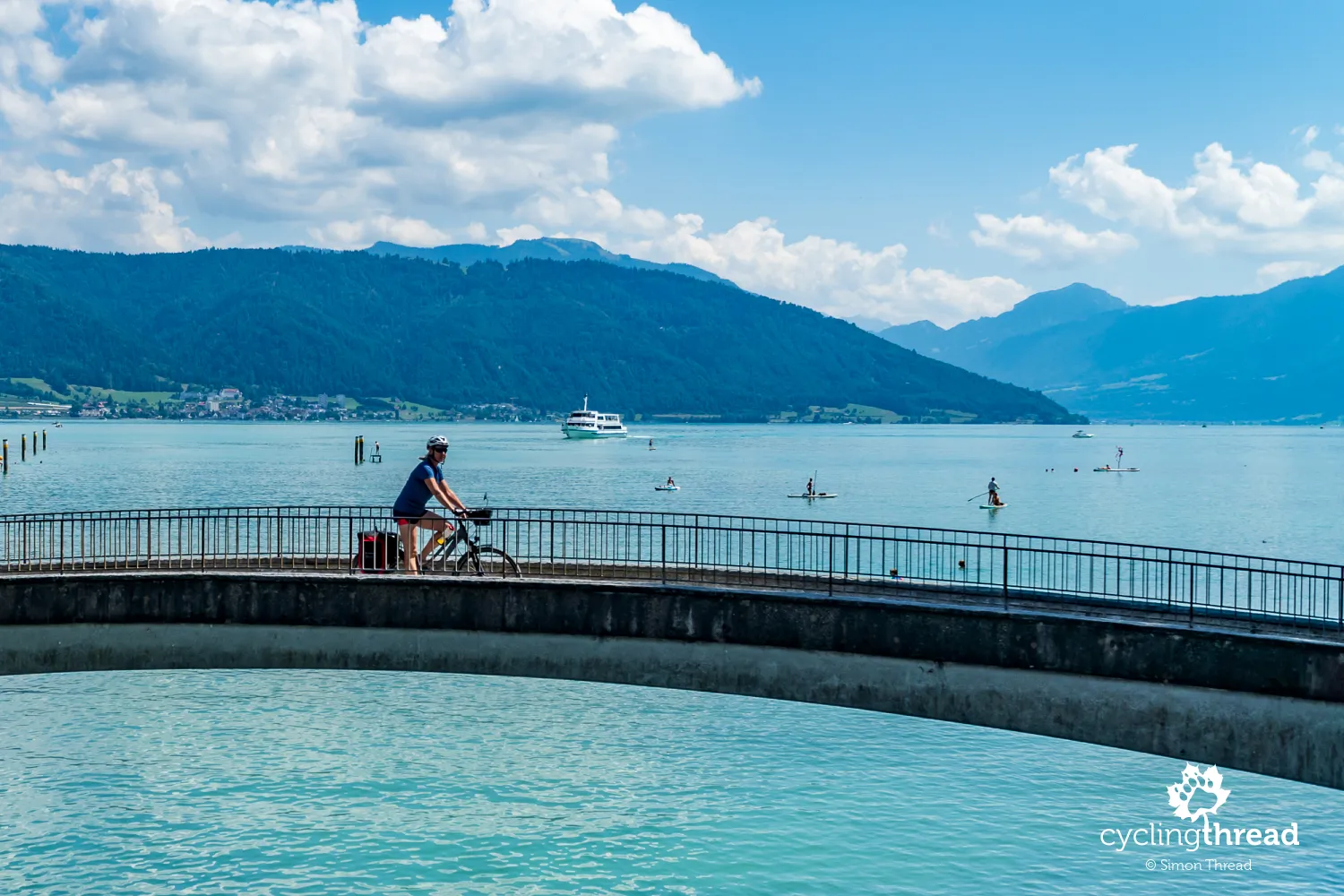
Lucerne - the most beautiful city in Switzerland
Lucerne is often called the most beautiful city in Switzerland. After a short ride through the streets of this city, founded over 800 years ago, we found no reason to dispute this claim. Among its most visited attractions is the Wine Market, featuring the city's oldest Gothic fountain, which commemorates the historical obligation of the city's residents to bear arms. A little further along, at the Grain Market, stands the town hall, where we stumbled upon an impromptu concert by a Czech choir. However, the two wooden bridges crossing the Reuss River diagonally - Chapel Bridge and Mill Bridge (also known as Mühlen Bridge) - draw the most tourist attention. Chapel Bridge, considered the oldest covered wooden bridge in Europe, was built in the mid-14th century as part of the city's fortifications to protect against threats from Lake Lucerne, on which Lucerne is situated. The bridge is connected to the Water Tower, another element of the medieval fortifications, which has served various purposes over the centuries, including as a prison, an interrogation site, a treasury, and a city archive. Beyond these historic bridges, viewed from the north side of the Reuss, lies Mount Pilatus, a popular hiking destination for visitors to Lucerne.
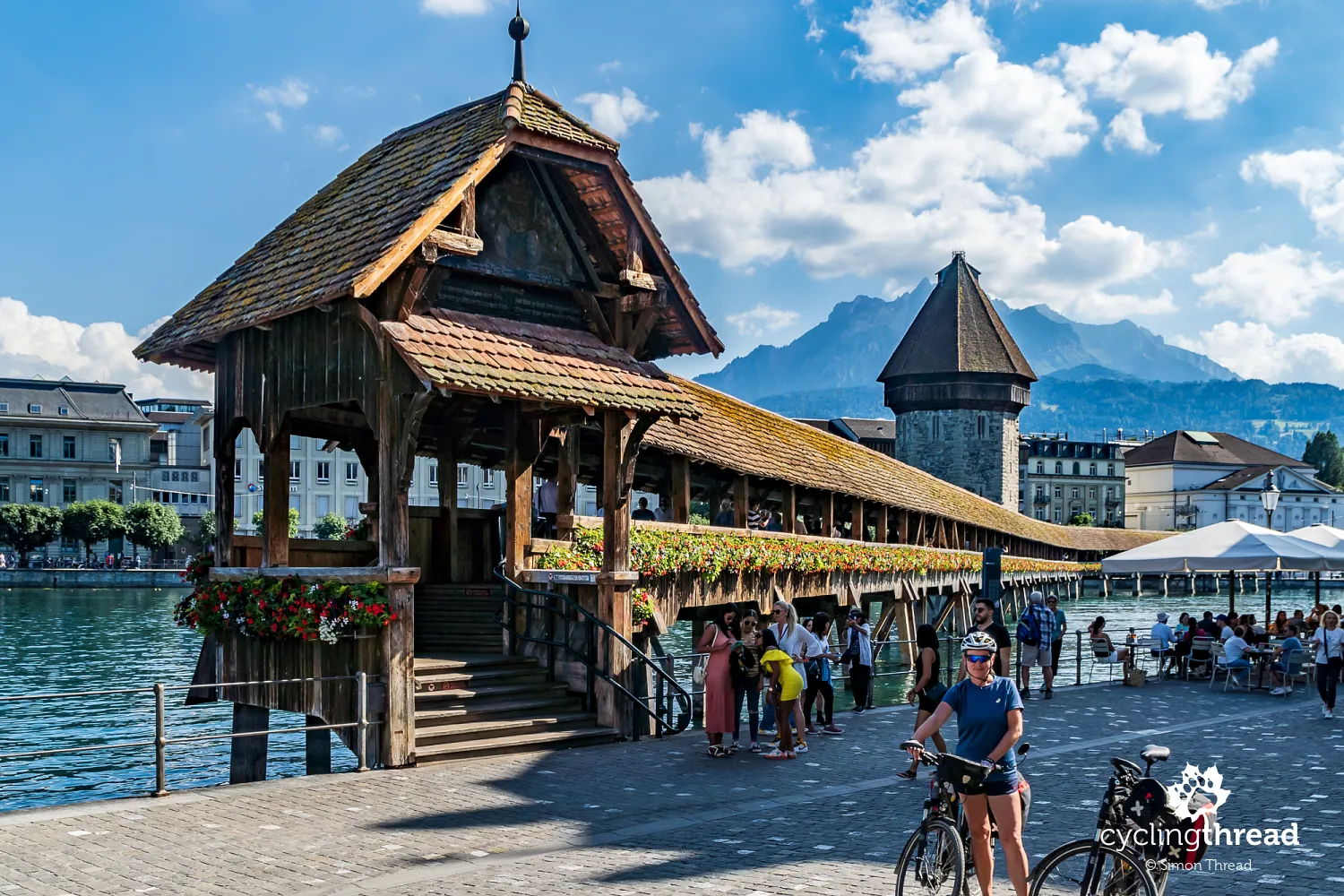
There’s no doubt that Lucerne, like Zurich, deserves a much longer stay than just an afternoon or morning stop. While researching the city’s attractions, I found at least five to seven places worth visiting. Among them was the Glacier Garden, where you can see traces of a glacier from the time when an 800-meter-thick ice sheet covered the area that is now Lucerne. Another intriguing spot is the Bourbaki Panorama, reminiscent of the Panorama Racławicka in Wrocław. This 115-meter-long painting depicts the 88,000-strong army of General Charles-Denis Bourbaki, who was interned in neutral Switzerland during the Franco-Prussian War in the late 19th century. As it turned out, we would hear more about General Bourbaki’s army a few days later while cycling the Jura Route. Other noteworthy museums in Lucerne include the Natural History Museum, which always enriches the geographic aspect of a trip, the Historical Museum, the Museum of Art, and the Wagner Museum.
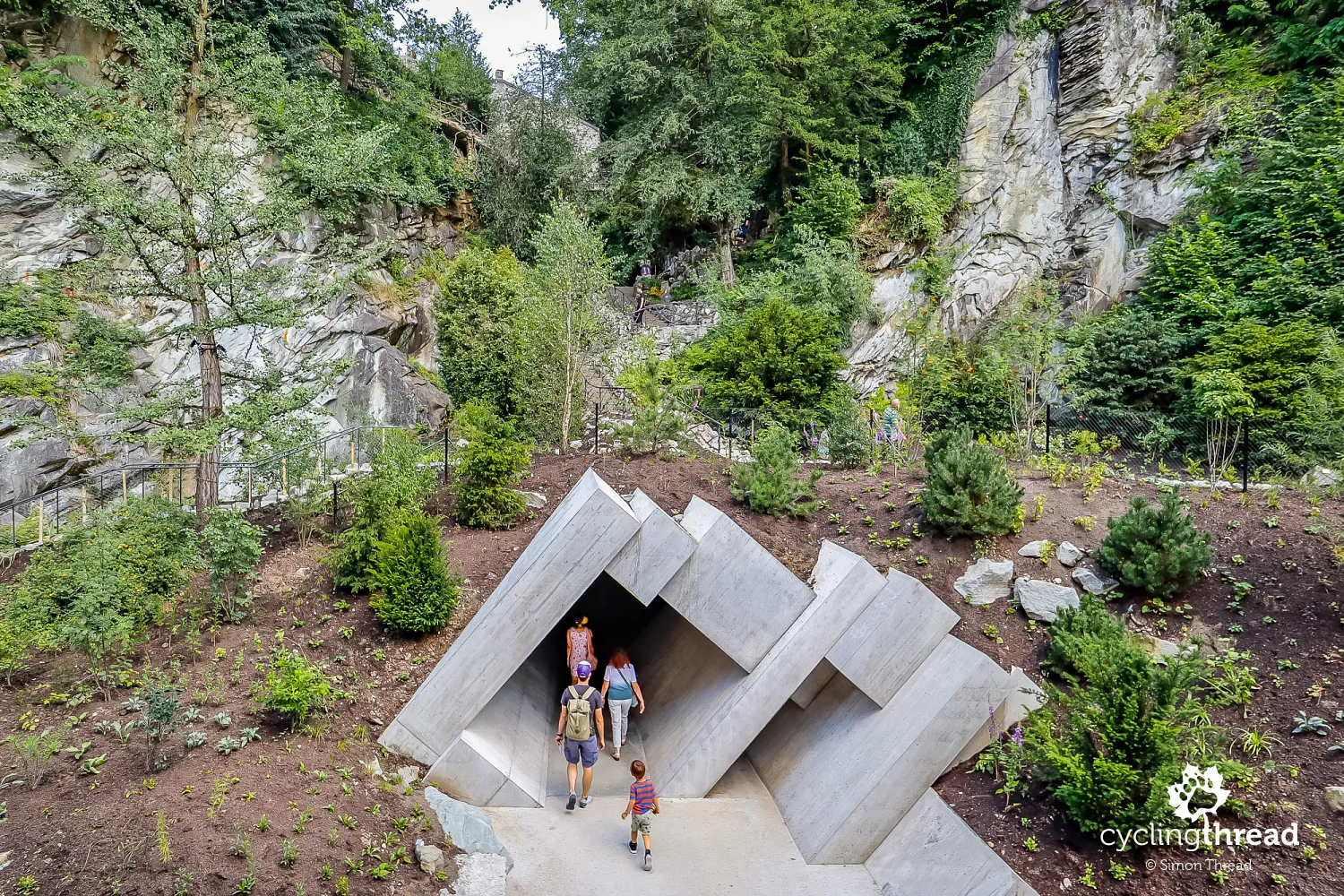
The fantastic Swiss Museum of Transport
A cycling trip has its priorities, so we chose the Swiss Museum of Transport as our final destination before heading out on the next leg of our journey. This museum houses artifacts representing virtually every mode of transportation that has ever operated in Switzerland. One striking exhibit contrasts the sleek, modern Stadler Smile high-speed train, which now travels through the recently opened Gotthard Base Tunnel (the longest tunnel in the world), with vintage locomotives and various types of carriages from Swiss rail history. That’s just one section - the museum also covers road, aviation, maritime, and even mountain railways. A standout feature of the Swiss Museum of Transport is its extensive facilities for children and young people; nearly every section includes interactive stations where the youngest visitors can learn through play. One curiosity is the facade of a building entirely covered with highway signs from Swiss motorways - a great way to trace your travels through Switzerland, though... I don’t understand why the signs weren’t arranged according to their geographic positions on the map.
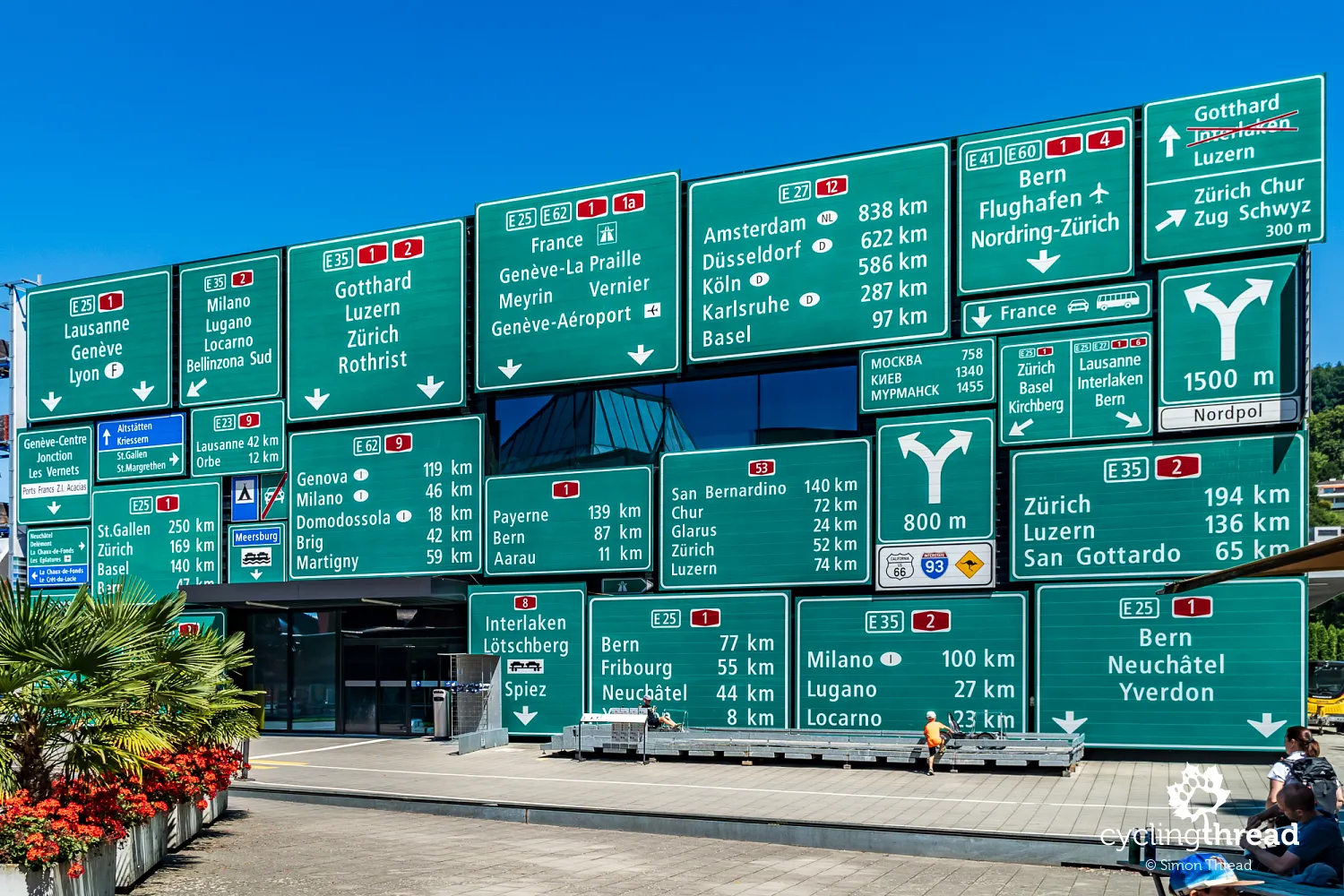
Along the lake with views of Pilatus
The first 15 kilometers from Lucerne along the Lakes Route run by the scenic shores of Lake Lucerne, which boasts the most varied shoreline in Switzerland. This stretch exemplifies how to maintain high standards of quality and safety in regional cycling tourism. Leaving Lucerne, we initially followed quiet city streets, but soon we encountered a variety of cycling tracks, including traditional asphalt bike paths and a short gravel single track along the lake. The highlight, however, was a wooden boardwalk for cyclists, “attached” to one of the roads by the lake. Although it wasn’t particularly wide and riding with a trailer would require stopping to let an oncoming cyclist pass, the charm was undeniable. Had it not been for its low position over the water, photos of the bike path along Lake Lucerne could easily be mistaken for the famous cycling boardwalks along Lake Garda in Trentino, Italy. Throughout much of this section around Lake Lucerne, the majestic Pilatus loomed in the background, a hallmark of Swiss landscapes that had greeted us from the moment we arrived in Lucerne.
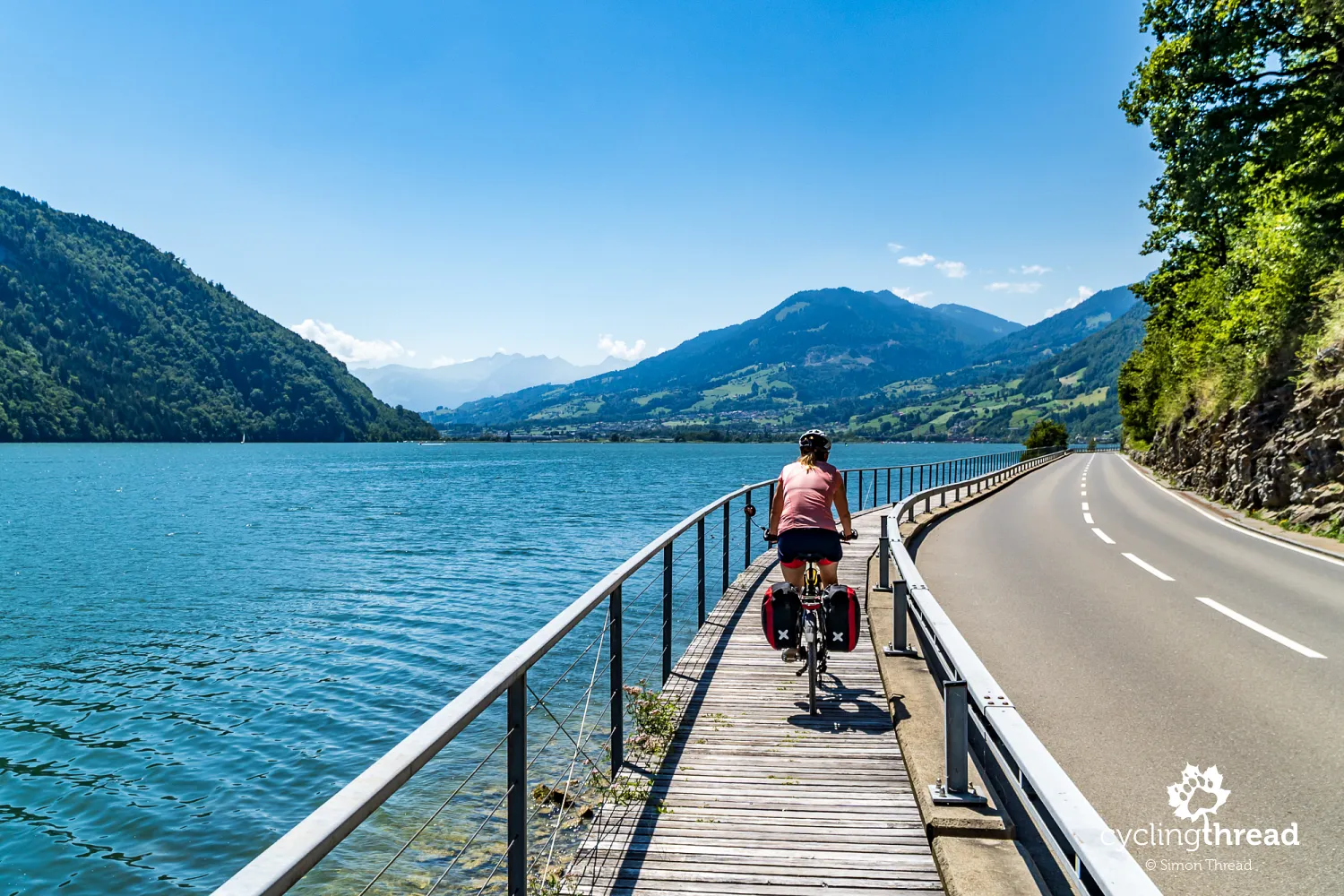
Climbing between the lakes
Near Sarnen, with its charming historic market square, we began a gentle ascent toward the Brünig Pass. The Lakes Route continued to avoid busy roads, guiding us along quiet side streets and well-maintained gravel paths. First came the small Wichelsee, then the larger Sarnersee and Lungerersee. From higher ground, we looked down on the turquoise surfaces of these successive lakes. Each was situated at a slightly higher elevation than the last, requiring us to tackle additional climbs. The biggest challenges ahead were detailed on Swiss cycling signs, which displayed key information about each ascent, including length, elevation gain, and sometimes both the average and maximum gradient. One 2-kilometer stretch near Giswil indicated a gradient of 12%, though in reality, we found ourselves climbing slopes steeper than 16%. However, these were still modest compared to the 48% incline of the Pilatus Railway, the world’s steepest cog railway, which has been running between Alpnach and the summit of Pilatus since 1889.
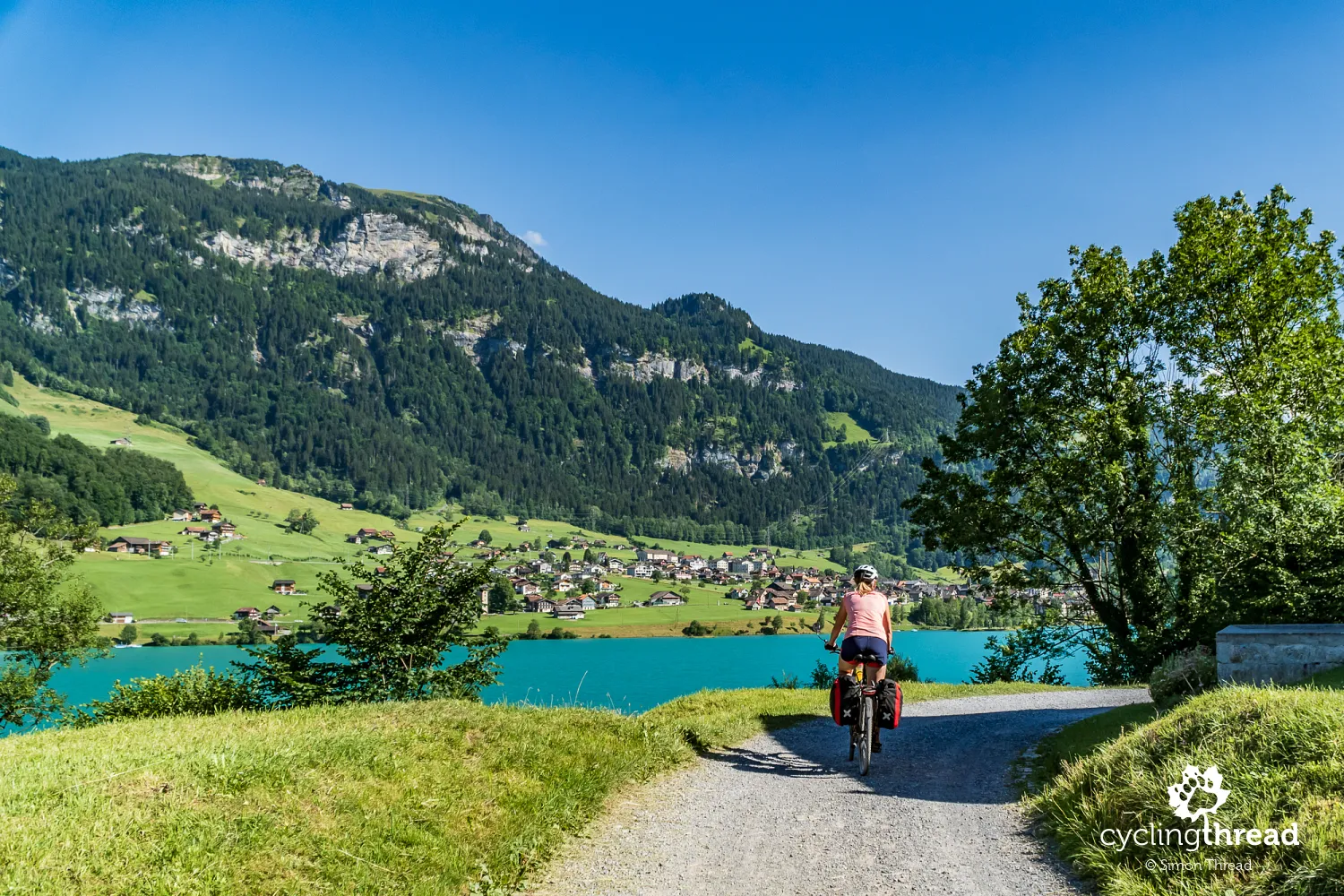
A gradient of several percent is a real challenge for cyclists
Gradients of over 10% are undoubtedly challenging for any cyclist, and only the strongest will conquer such climbs without a proper workout, especially with panniers. However, I encourage those less experienced not to take it personally! Firstly, such steep climbs were quite rare on our route. Secondly, they were never excessively long. And finally, for consolation, there’s always a descent after a climb, as one of the golden truths of cycling states. It’s worth gritting your teeth and either breaking a difficult ascent into several shorter sections with rests or simply pushing your bike up on foot. After the climb to Brünig Pass, with its gradients of over 10%, we were rewarded with a stunning section leading to Meiringen. The ride began with a scenic road overlooking the Aare Valley and one of the glaciers in the Wetterhorn massif, followed by a five-kilometer forest descent with an average gradient of around 10%.
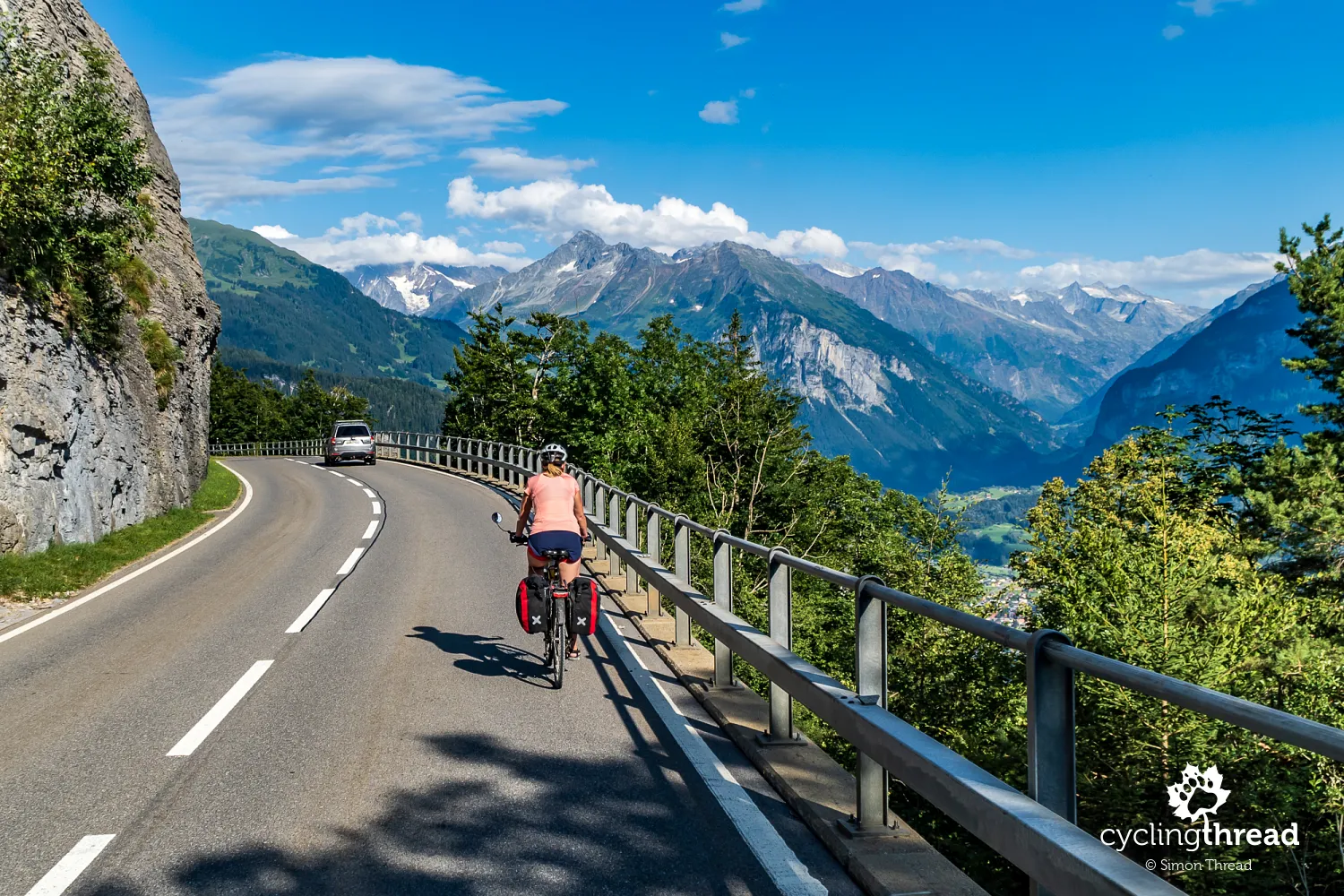
The waterfall where Sherlock Holmes met his fate
The world’s attention to Meiringen was drawn by the British author Arthur Conan Doyle, who killed off his famous detective, Sherlock Holmes, at the Reichenbach Falls, about five kilometers away. In the novel *The Final Problem*, Holmes and his nemesis, James Moriarty, grapple and fall into the roaring waters of the falls, disappearing without a trace. Yet, Sherlock Holmes reappeared alive in subsequent stories, with Conan Doyle explaining that Holmes faked his own death. This twist didn’t diminish Meiringen’s popularity among fans of the detective series. In 1988, the first and oldest statue of Holmes was unveiled here, and in 1991, the Sherlock Holmes Museum opened. Among its exhibits is a meticulous reconstruction of Holmes’s study, set on Baker Street in London according to the novels. The road from Meiringen to the Reichenbach Falls involves a steep climb, which is a rewarding challenge for fans of the stories.
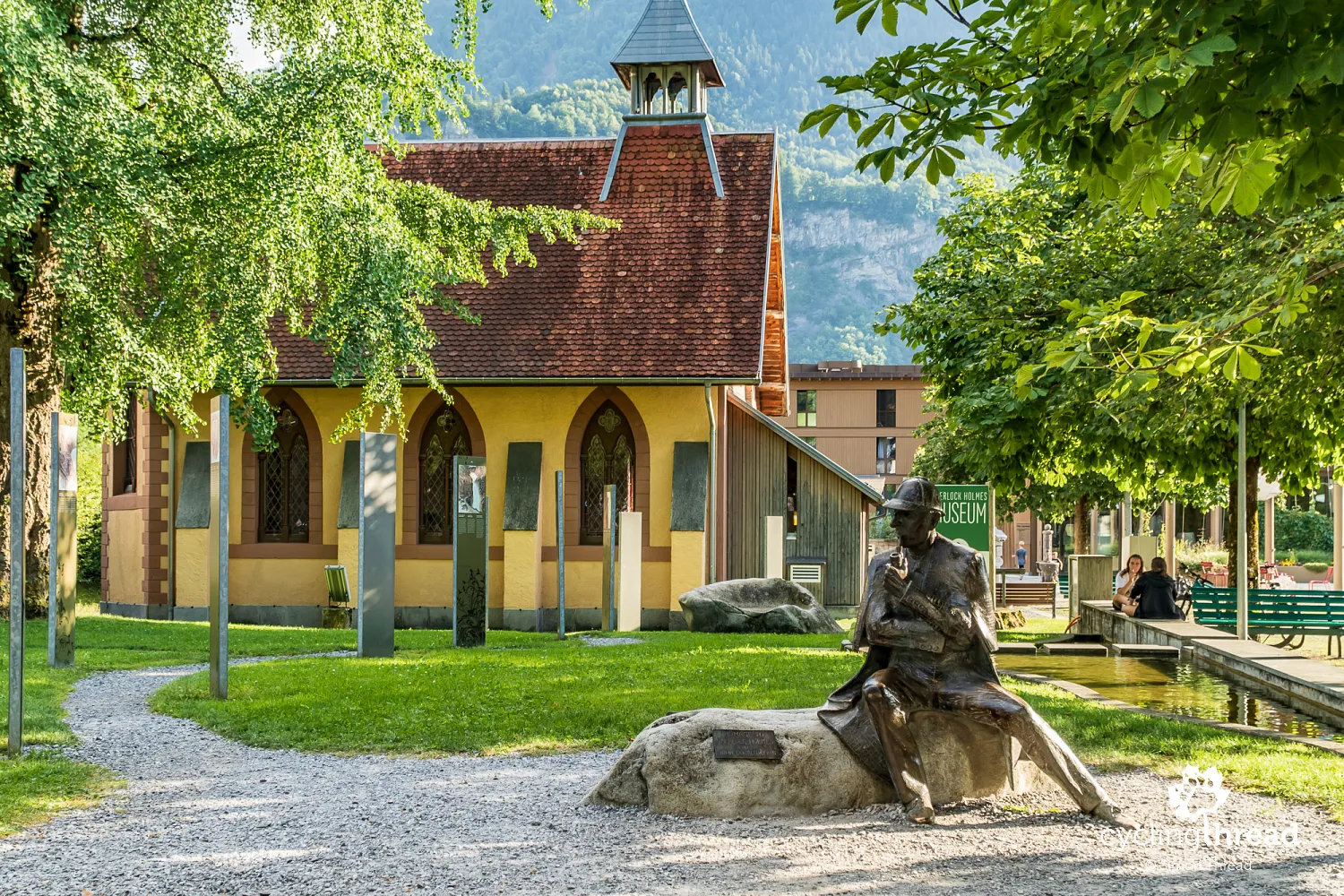
A 1.5-kilometer walk through the Aare Gorge
Another fascinating site near Meiringen, worth including in your Lakes Route itinerary, is the Aare Gorge (Aareschlucht). A walk through the gorge, about 1,400 meters long and up to 200 meters deep, offers stunning views of narrow river passages carved into the limestone over thousands of years by the Aare River. The narrowest section of the gorge is just one meter wide. A well-maintained walking path includes tunnels carved into the rock and metal platforms suspended above the gorge floor, offering new and dramatic perspectives of the rocky landscape at every turn. A rare and practical feature of the Aare Gorge is the train stops at both ends of the trail, allowing visitors to return quickly to their starting point.
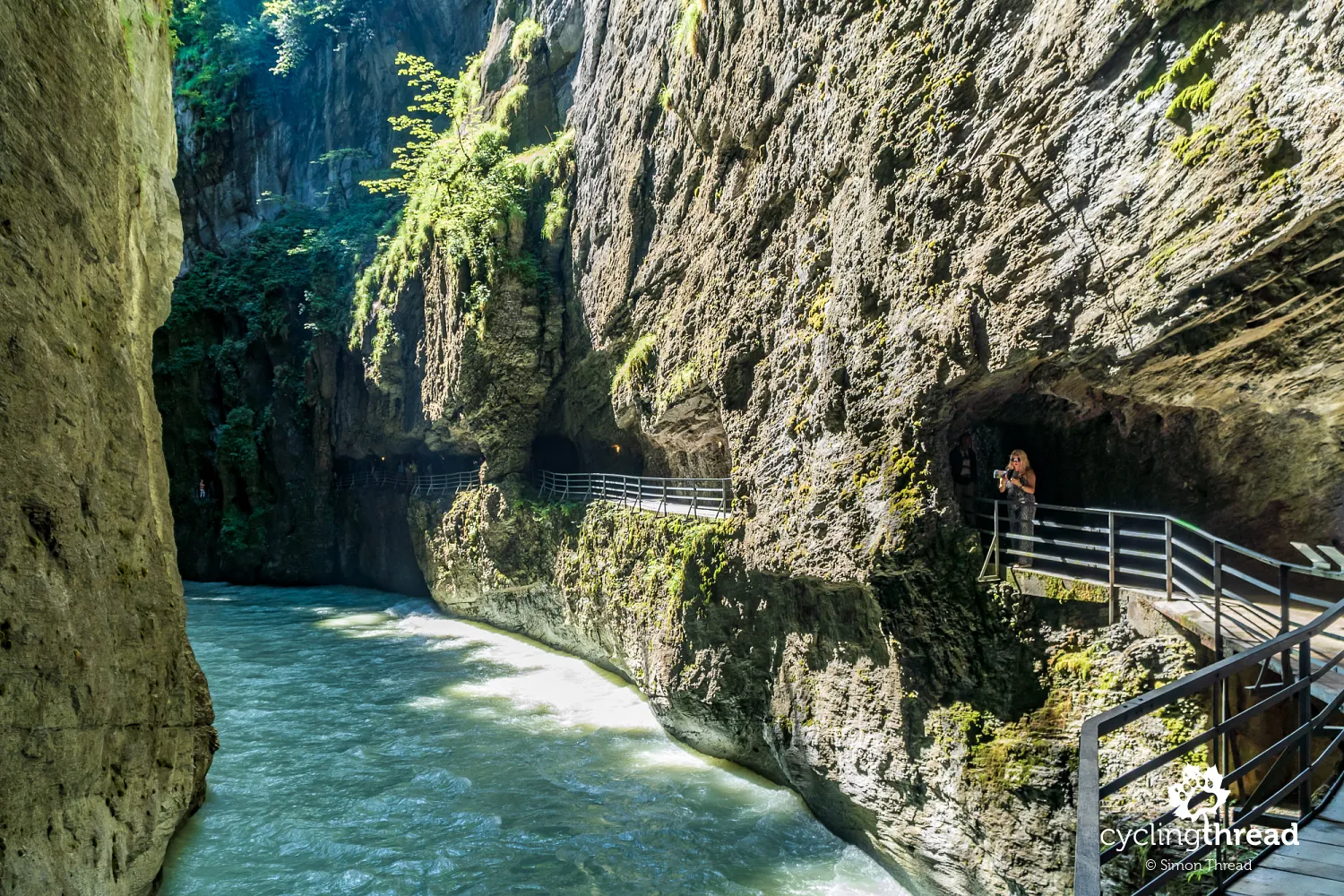
Traditional rösti with egg for dinner
In Meiringen, we ended our day with a popular Swiss dish: rösti. These are potato pancakes grated coarsely and typically the size of a whole pan, unlike the smaller versions we’re used to eat. Rösti originated as a staple dish among the less affluent residents of the canton of Bern. Fried with bacon, crispy, and served to us with yellow cheese and egg in one version and white local sausage in another, the dish was delicious, much to the delight of our waiter, who also happened to be the hotel owner. Enjoying rösti on the hotel terrace in the light of the setting sun over Meiringen was a truly pleasant conclusion to an active day. And as if Meiringen didn’t already have enough attractions, it’s also the birthplace of meringue, first baked here around 1600 by a baker named Gasparini. Thankfully - or regrettably - there was no meringue on the hotel menu.
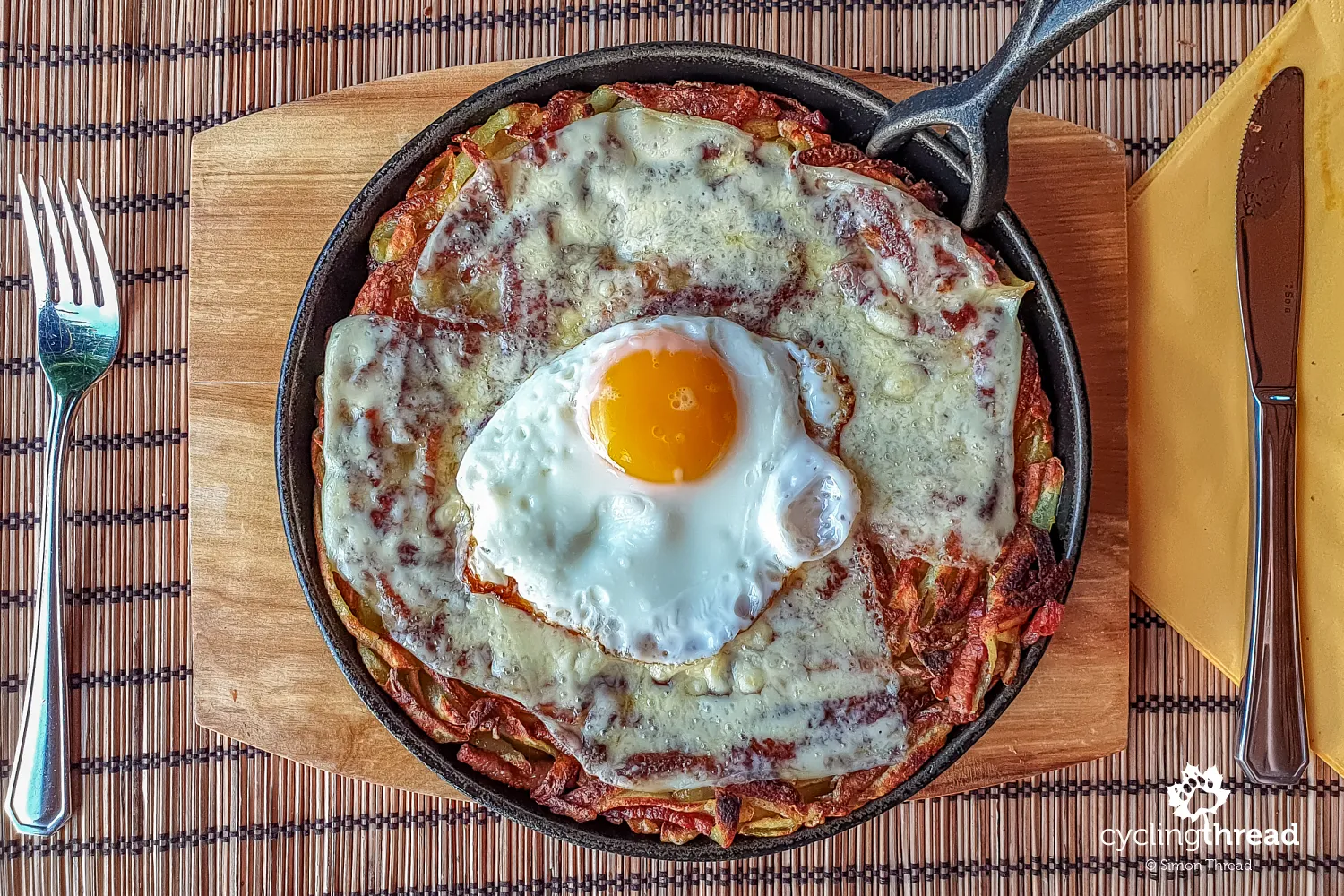
Postcard-perfect Switzerland by Lake Brienz
After the picturesque Lake Lucerne, the next section of our route featured yet another series of “postcard” spots along the Lakes Route. The first was Lake Brienz (Brienzersee), with its almost unreal turquoise water color, owed to the mineral content in the sediments carried into the lake by nearby rivers and streams, primarily the Aare River. This phenomenon is especially visible from the high shores of Lake Brienz, where the Aare’s delta supplies the lake with massive amounts of fine sediment, later dissolved in the water. After a short but intense climb, the route crosses the waters of the Giessbach Falls, a popular destination for boat cruises on the lake. This famous waterfall cascades down 14 steps with a total height of over 500 meters. At its base, with a splendid view of the turquoise lake, stands the elegant Grandhotel Giessbach, featuring 70 individually designed rooms. To reach the hotel, located about 100 meters above the lake, you can take the Giessbach funicular, one of Europe’s oldest cable railways.
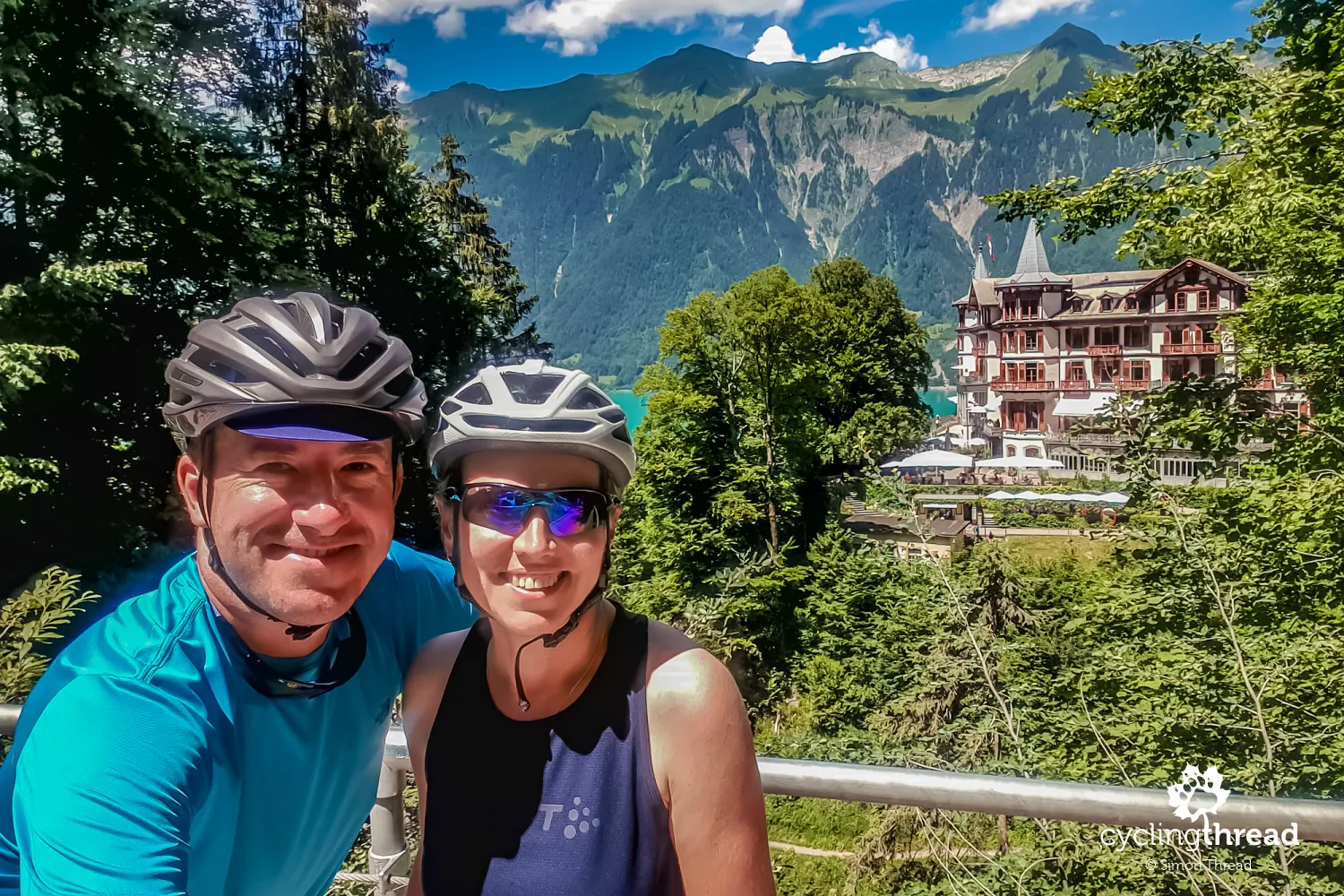
The charm of Iseltwald
A few kilometers further, a small peninsula juts into the turquoise waters of the lake, now home to a congress and conference center. This is the village of Iseltwald, where the Seeburg Castle once stood during the Middle Ages. The village only gained road access after the construction of the A9 motorway; before that, Iseltwald was reachable only by water due to its secluded location. The Lakes Route follows the southern shore of Lake Brienz, alternating between narrow mountain asphalt roads and gravel paths shared with hiking trails. Due to the incline of the gravel sections and heavy pedestrian traffic near Giessbach Falls, signs instruct cyclists to dismount and walk for a short distance. Incidentally, the stretch between Interlaken and Giessbach Falls is where we encountered the highest number of cyclists, mostly on e-bikes, as this section is a popular choice for day trips.
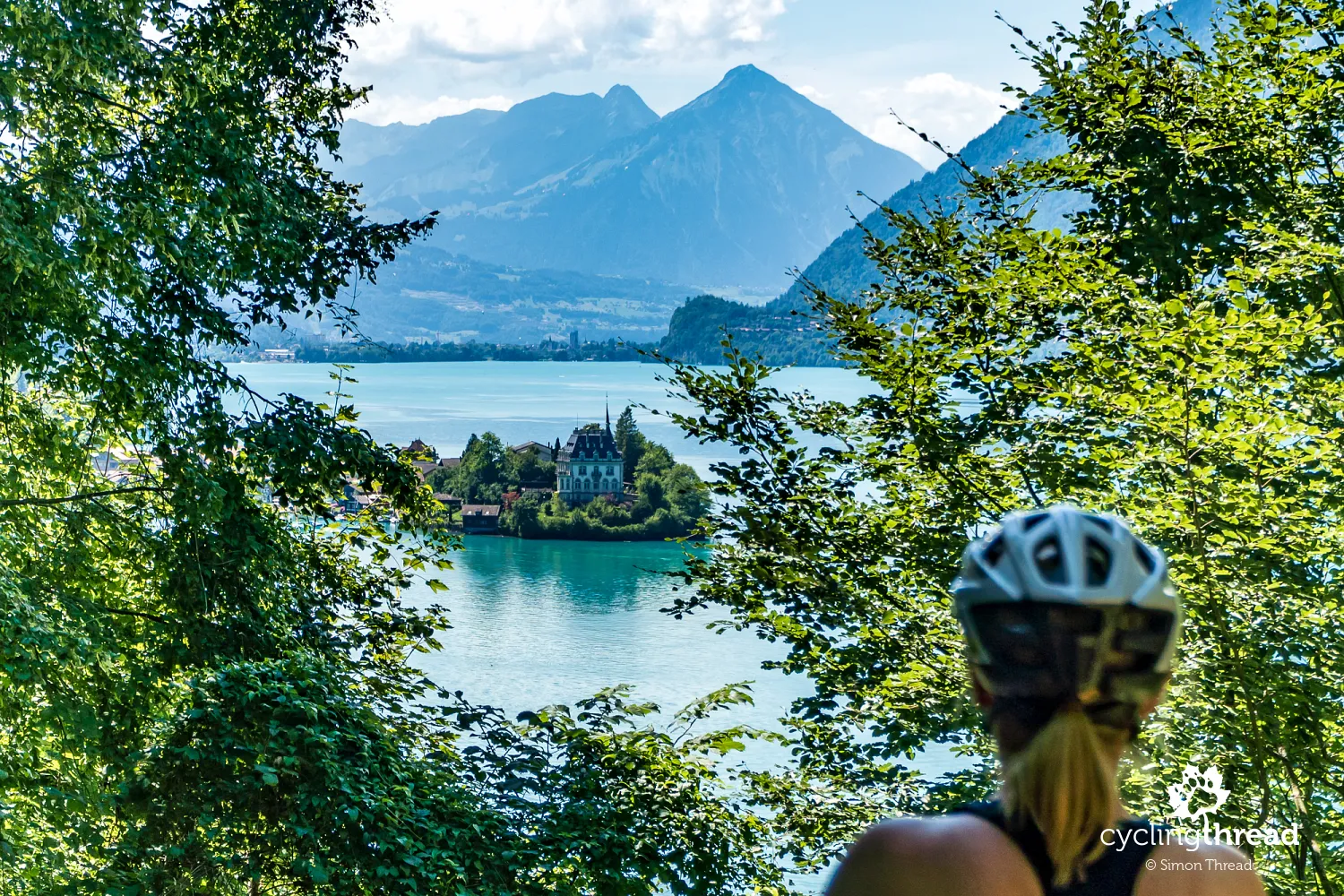
Between the lakes, as the town's name suggests
At the end of the turquoise Brienzersee, we reached the renowned town of Interlaken. Its fame, however, doesn’t stem from a beautifully preserved old town, painted facades of tenement houses, or an impressive castle, as is the case in other Swiss towns. Interlaken built its reputation primarily on its striking natural location between Lake Brienz and Lake Thun, as well as the nearly countless opportunities for sports and tourism, both in summer and winter. Hiking trails and ski slopes in the area are measured in hundreds of kilometers, and there are no fewer than 45 mountain railways around Interlaken. Some of them provide access to iconic peaks such as Jungfrau, Eiger, and Mönch. Interlaken, however, left little impression on us, and we even found it one of those towns that look best when viewed from a mountain trail or scenic overlook. On the other hand, we encountered a charming atmosphere in the neighboring Unterseen. One highlight of its Stedtli, as the local old town is called, is a picturesque row of colorful houses standing right on the banks of the Aare River.
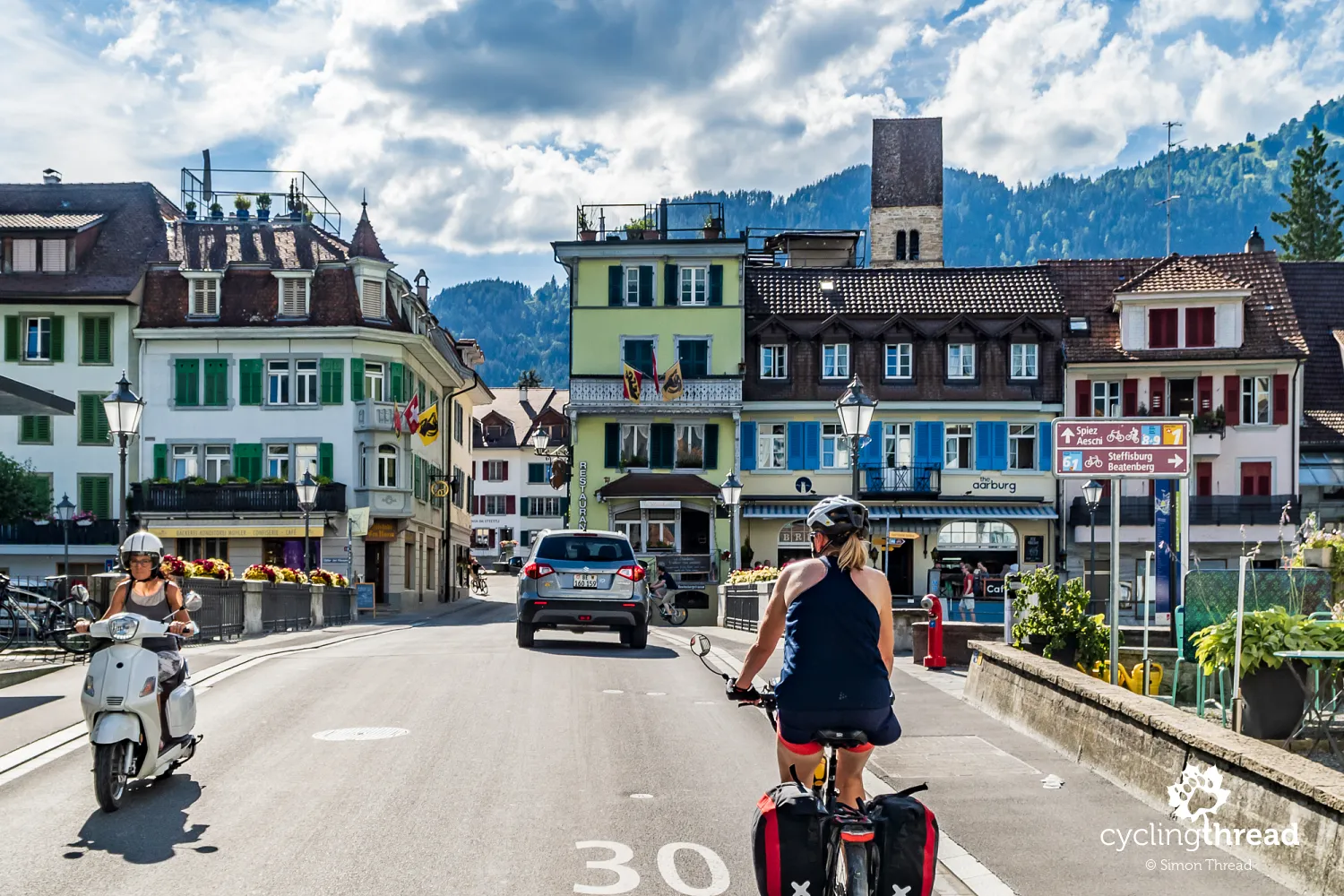
A special red lane for cyclists
After leaving Interlaken and Unterseen, we ventured onto another unique segment of the Lakes Route. Due to the lack of space and technical feasibility for a dedicated bike path, a special several-hundred-meter red cycling lane was painted on a roadway leading to the A8 motorway. Despite a speed limit of 60 km/h, at one point, cyclists on this distinctive red "carpet" find themselves between a straight lane and one leading to a motorway exit. If traveling with a more sensitive group, such as with children, extra caution is required here. While potentially hazardous, I couldn’t help but note the extraordinary measures the Swiss have taken to ensure visibility and safety for cycling tourists, ensuring a secure passage towards Lake Thun.
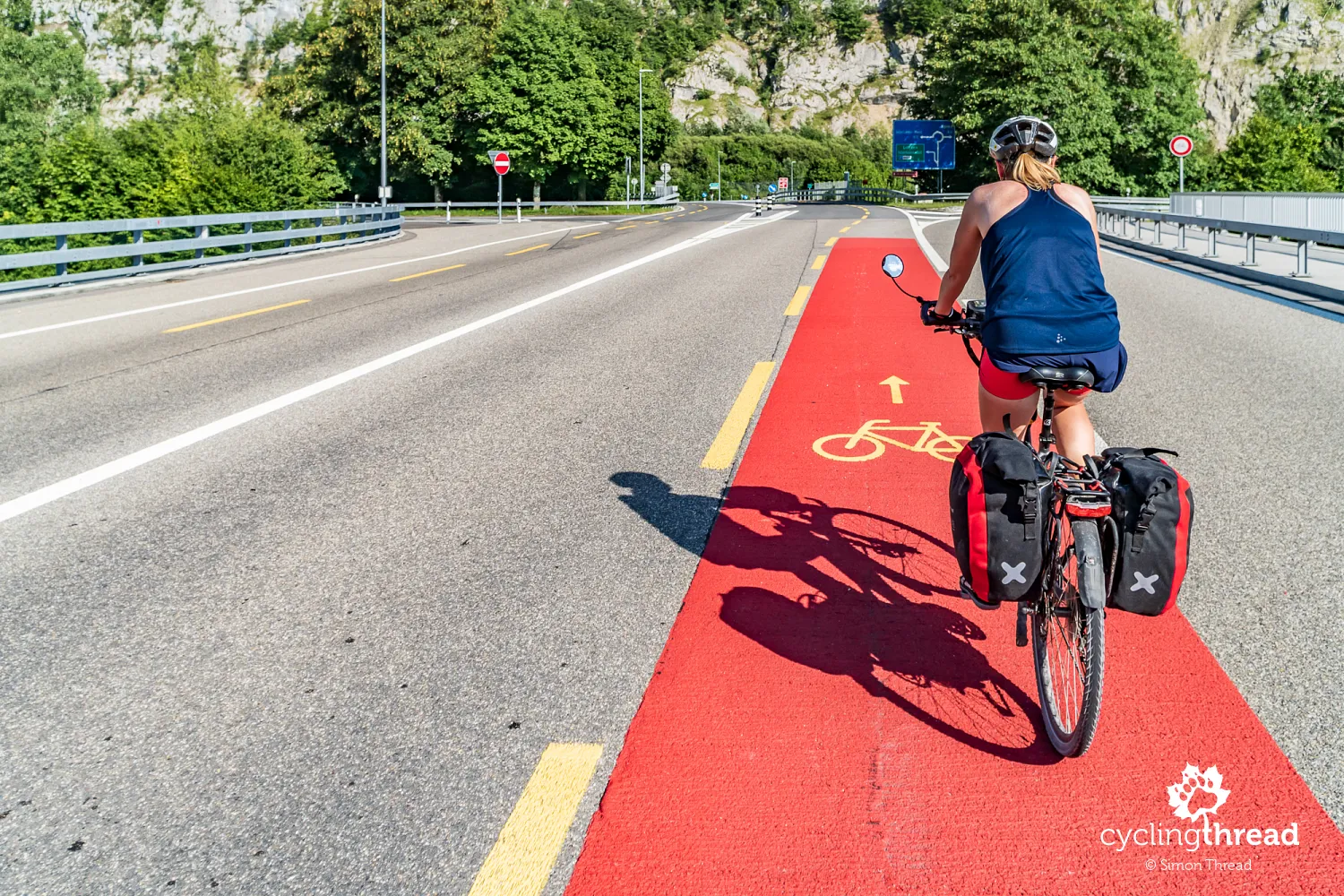
The world's longest staircase race
Most of the approximately 15-kilometer section of the Lakes Route between Interlaken and Spiez runs along a bike path hugging the shores of Lake Thun. Unlike the turquoise hue of Brienzersee, Thunersee exhibits a deep navy blue, a feature even highlighted in guidebooks and confirmed by my own photographs of Spiez the following day. Overhead, a nearly perfect pyramid shape rises - the Niesen, also known as the Swiss Pyramid. From its summit, there’s an incredible panoramic view of the surroundings, including Lake Thun, which we cycled along that day, and the Simme Valley, which awaited us the next day. Legend has it that 12 ancient churches scattered around Lake Thun, said to have been built in the 10th century by King Rudolf II of Burgundy and Lombardy following a divine prophecy, are visible from the peak. The stairway running alongside the funicular track leading to the summit is recognized by the Guinness World Records as the longest staircase in the world, boasting 11,674 steps. Each year, a race to the top of Niesen is held along this route.
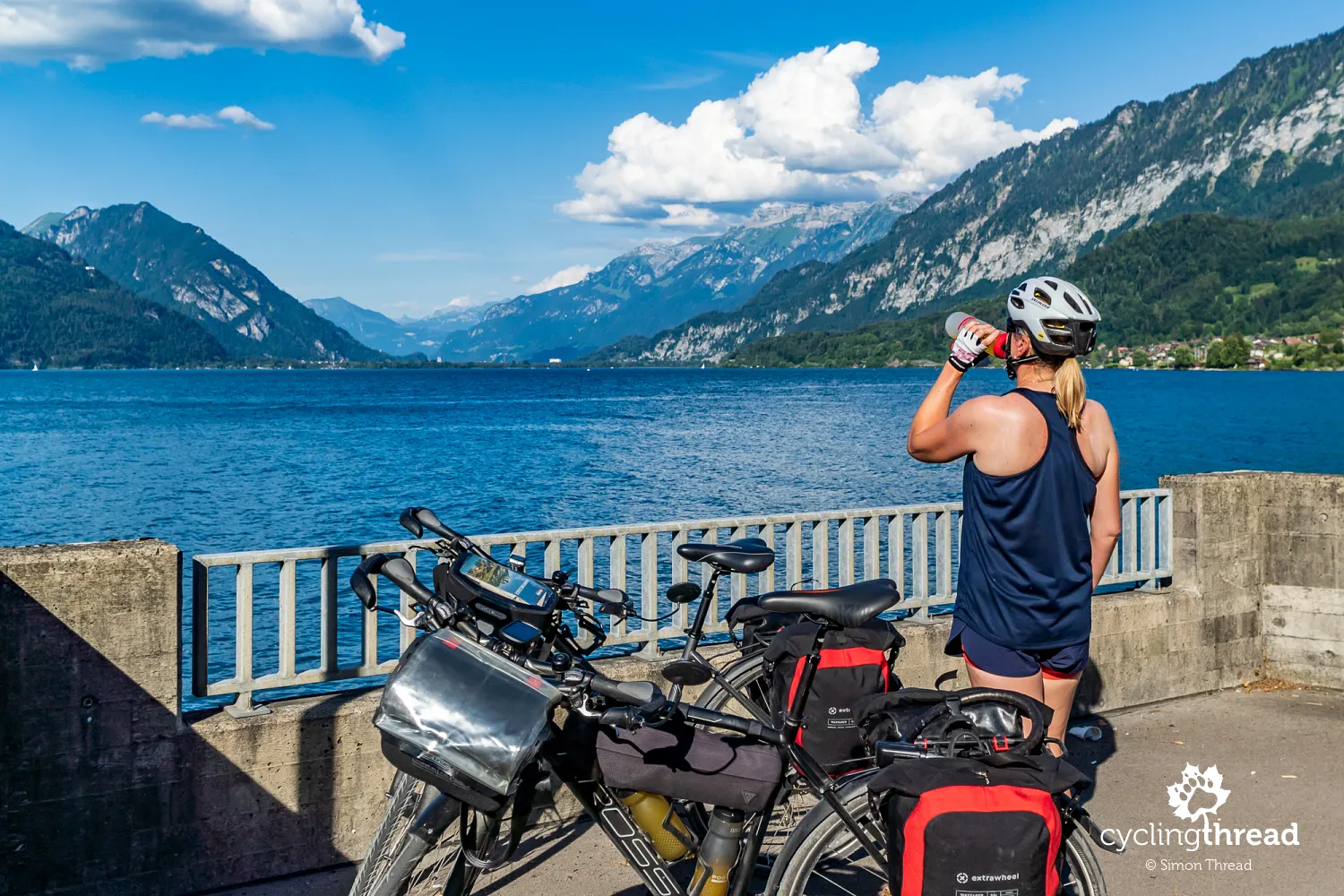
A hotel with views of Lake Thun
The hallmark of Spiez is its castle, which, along with a nearly 1,000-year-old Romanesque church, occupies a prime position between a small vineyard and a bay of Lake Thun filled with moored yachts and boats. One of its 16th-century owners, Franz Ludwig von Erlach, reportedly had 37 children. For us, however, Spiez will always be associated with an excellent hotel where we stayed. Its cool, Scandinavian-inspired interiors contrasted with the warm, summer ambiance of a large, shared terrace formed by merging several hotel balconies. This slightly improvised communal space became the setting for a delightful evening gathering of strangers - a diverse group that included a significantly age-gapped couple from Luxembourg, a boisterous family from Germany, two Dutch academics, and a pair of Polish cyclists. In such company, it was hard to decline another glass of wine, even with the thought of the next day’s cycling ahead. Adding to the charm was the stunning morning panorama of Spiez, featuring its castle, Romanesque church, yacht harbor, and adjacent vineyards - a fond memory that remains with us from our journey.
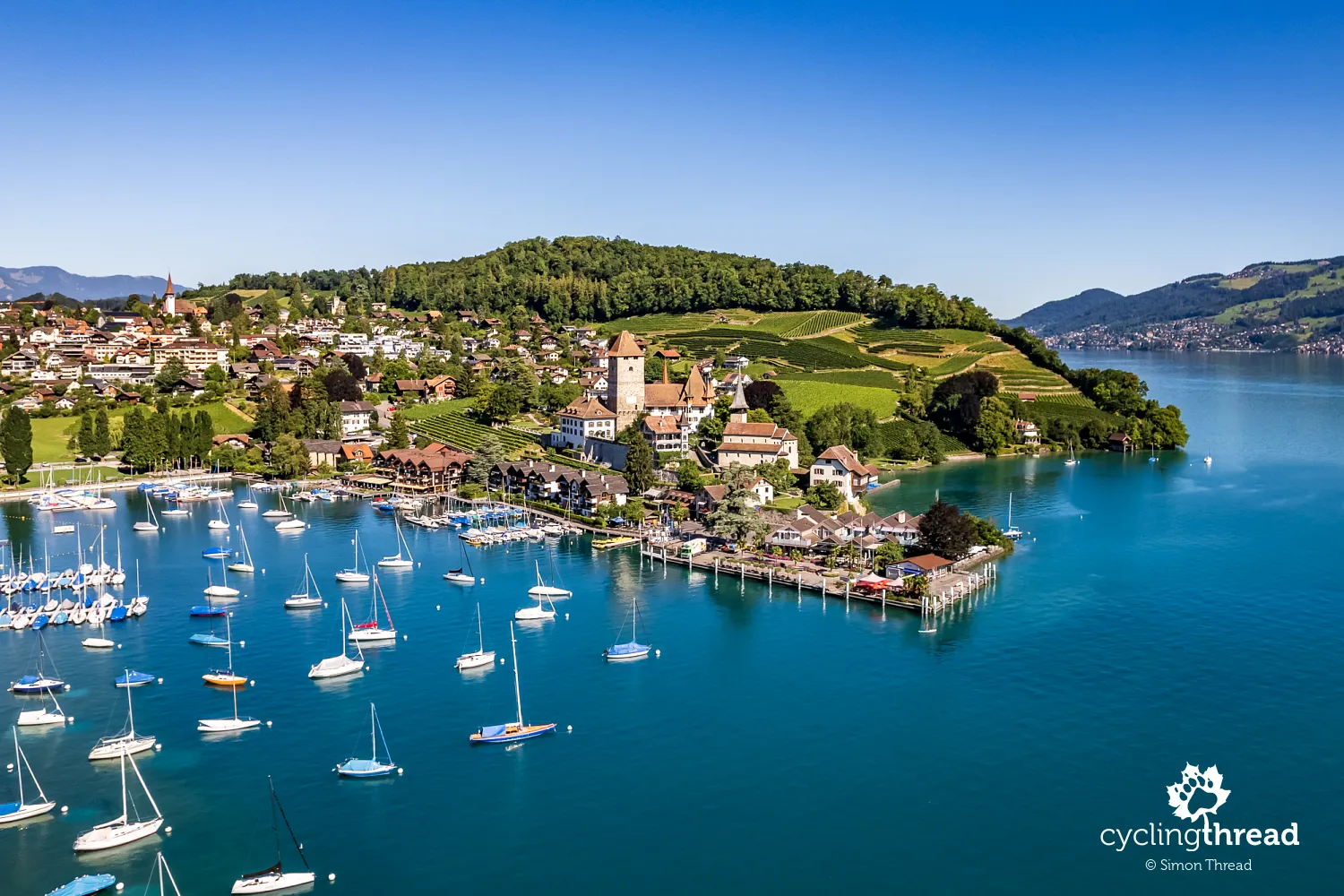
Cycling in Swisstainable style
The days spent between Spiez, Gstaad, Château-d'Oex, and Gruyères were undoubtedly the most enjoyable of our multi-day trip along the Lakes Route. Moreover, they epitomized the “swisstainable” travel philosophy that Switzerland has been promoting for years. A Swisstainable journey is at least a few days long, environmentally responsible, and deeply connected to nature, local traditions, and regionally produced goods. This was precisely the spirit of our ride through the valleys of the Simme, Klein Simme, and later the Saane (Sarine) rivers. The route ran in our favorite way - along quiet, narrow asphalt roads, often entirely ours except for occasional use by locals from nearby farms. Major roads were usually far away, on the opposite side of the valley, allowing us to escape the noise of traffic. On our side, we encountered a charming, traditional Switzerland, dotted with picturesque farms and surrounded by the modest Alpine ridges of the Bernese and Fribourg Alps.
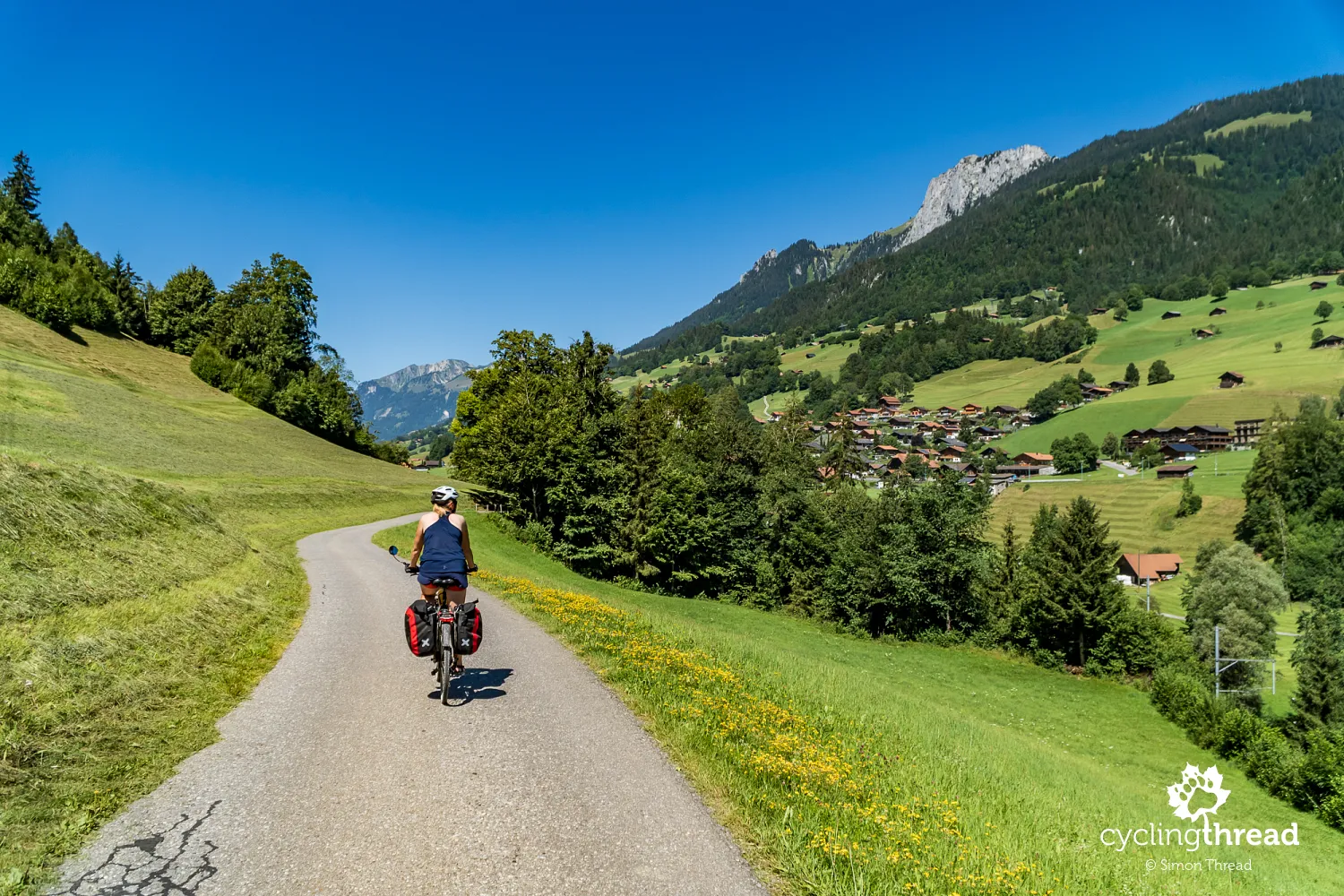
Traditional wooden houses in the Simme Valley
In the Simme Valley, we admired numerous impressive, large wooden houses, quintessential to rural Switzerland. Two themed trails - Simmentaler Hausweg and Obersimmentaler Hausweg - are dedicated to this traditional rural architecture. Each features around 30-40 houses scattered along the river, some directly on or very close to the Lakes Route. These trails offer a wonderful opportunity to appreciate local woodworking artistry dating back to the 17th and 18th centuries. Many houses feature preserved or restored carved decorations or paintings on their facades, often accompanied by dozens of white and red geraniums. The size of the houses and the richness of their decorations reflect the prosperity achieved by valley residents through cattle trading and agricultural labor in medieval times. A similar trail highlights small, often Romanesque churches scattered throughout the Simme Valley.
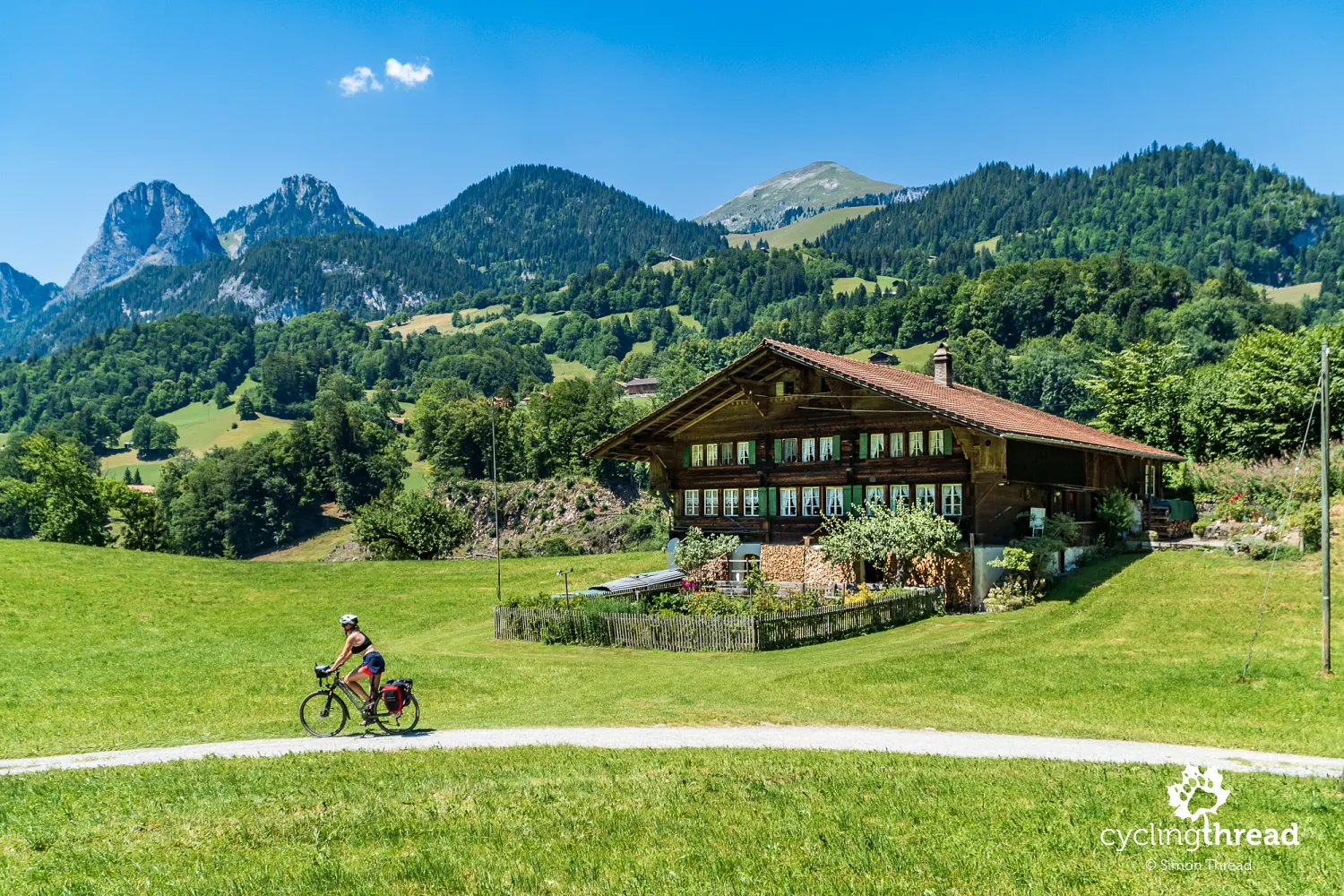
Cyclist, choose your climb
On one section of our route, we encountered another Swiss informational board designed for cyclists. This time, we learned that we had two options to reach the town of Zweisimmen: continue on the trail with a 410-meter elevation gain (indicated below) or take a regular road with less than half the total ascent (shown above on a blue "road" background). However, the information about the gradient puzzled us since neither the map nor the GPS track suggested we’d face an 18-kilometer ride at an average gradient of 7%. We concluded that the figure likely referred to the maximum gradient rather than the average - later confirmed to be true. With a small sense of satisfaction, we noted a rare inconsistency in the Swiss tourism information system. After all, wouldn’t knowing the average gradient be far more informative than the peak value? Or perhaps both values should be displayed? Regardless of how one views road gradients, this is yet another example of Switzerland’s cyclist-friendly approach to tourism.
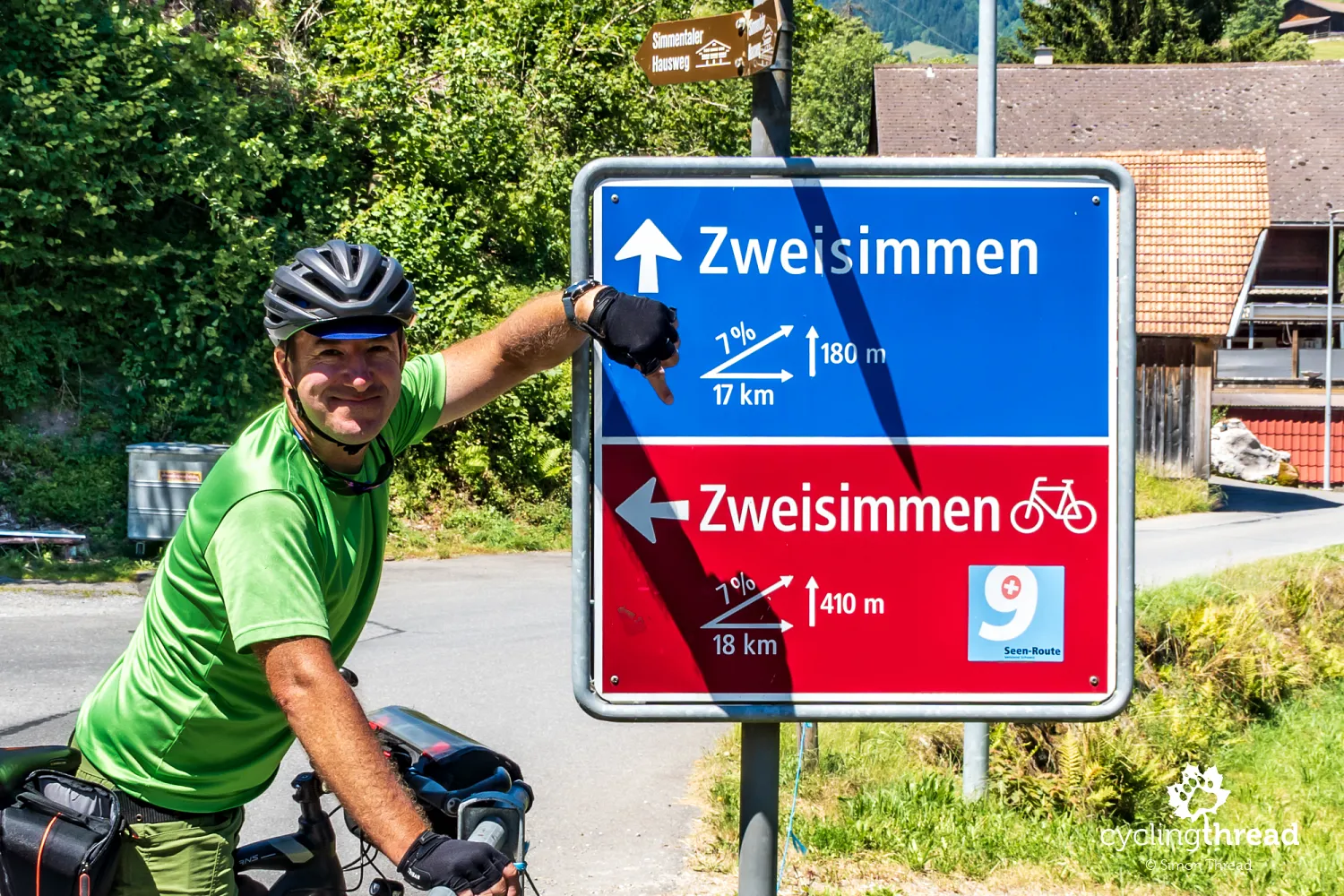
A more demanding climb awaited us between Zweisimmen and the Saanenmöser Pass, though this time we didn’t spot any cyclist-specific informational boards - perhaps they were simply not in sight? The narrow road, used primarily by local farmers, climbed steeply in the mountains with several segments at gradients between 10-15% and even exceeding 15% at one point. Slowly but steadily, we covered the kilometers to the small village of Saanenmöser, where we took a short break. Coffee and cake at a quaint café were a well-deserved reward for the hard cycling work. Shortly afterward, we embarked on a speedy descent towards Gstaad. It was another picturesque, scenic stretch - a perfect blend of alpine landscapes, vast open spaces, the rush of wind whistling past our ears, and an empty road leading to the next destination, this time the “Alpine Hollywood.” Beautiful!
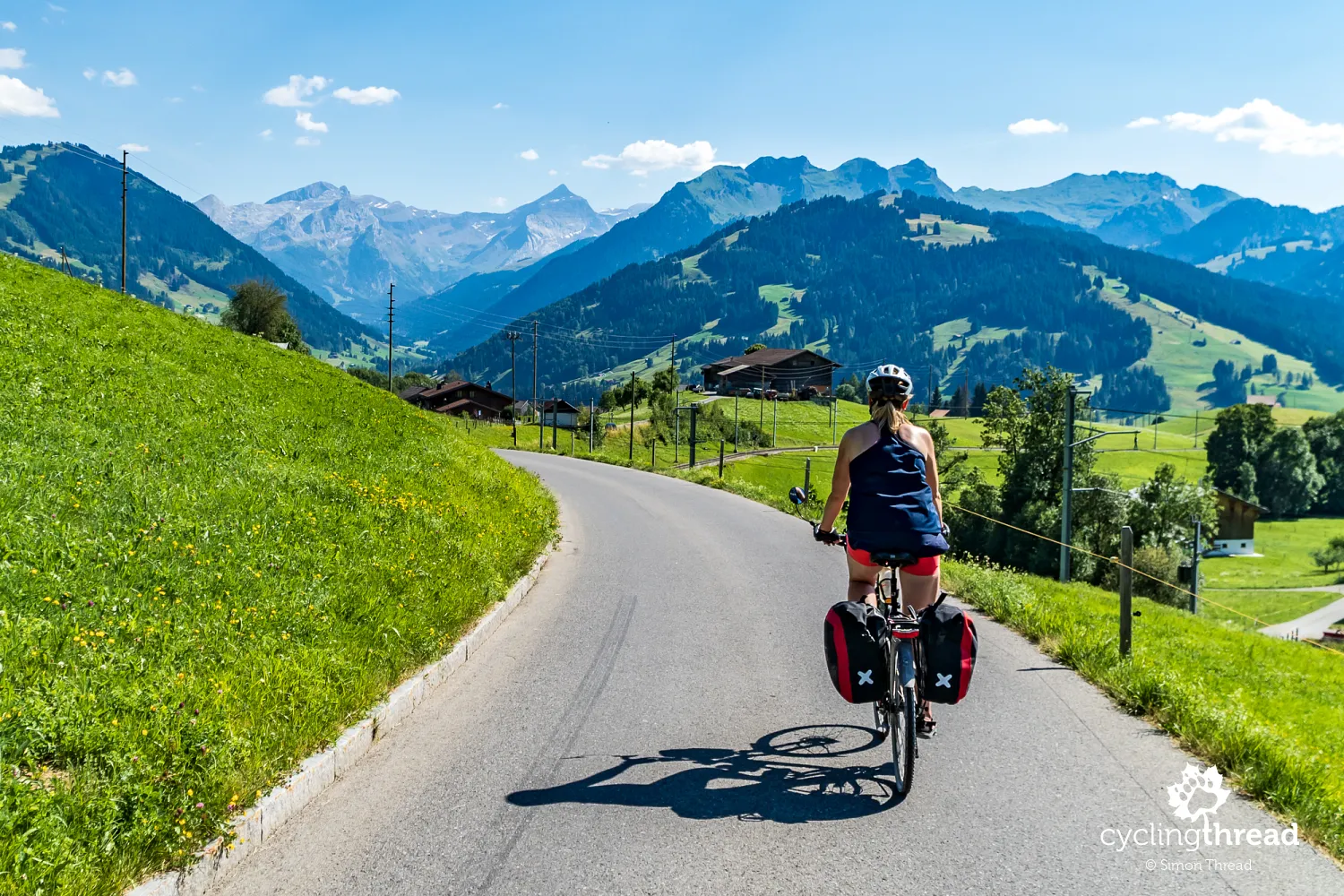
Madonna and Polanski in Alpine Hollywood
We rode leisurely through the center of Gstaad, an elegant holiday resort often dubbed the “Alpine Hollywood.” Celebrities from around the world vacation here, with Madonna famously hosting a birthday party in Gstaad. The immaculately crafted wooden chalets seemed freshly built, their ground floors housing luxury brand boutiques one would expect in Switzerland. Flags advertising upcoming events fluttered above the promenade - first enticing us with the Gstaad Menuhin Festival, founded by the renowned violin virtuoso Yehudi Menuhin, followed by the annual ATP tennis tournament, which, fun fact, was won by Polish player Wojciech Fibak in 1981. Another Polish connection to Gstaad is Roman Polanski, who owns a home here. At the end of the promenade, we stopped at a street fountain to refill our bottles. Across from us, under a beautifully decorated wooden facade, stood the Prada logo. Amused by the juxtaposition, we pedaled onward - this was far from the day’s last aesthetic, scenic, or cultural delight.
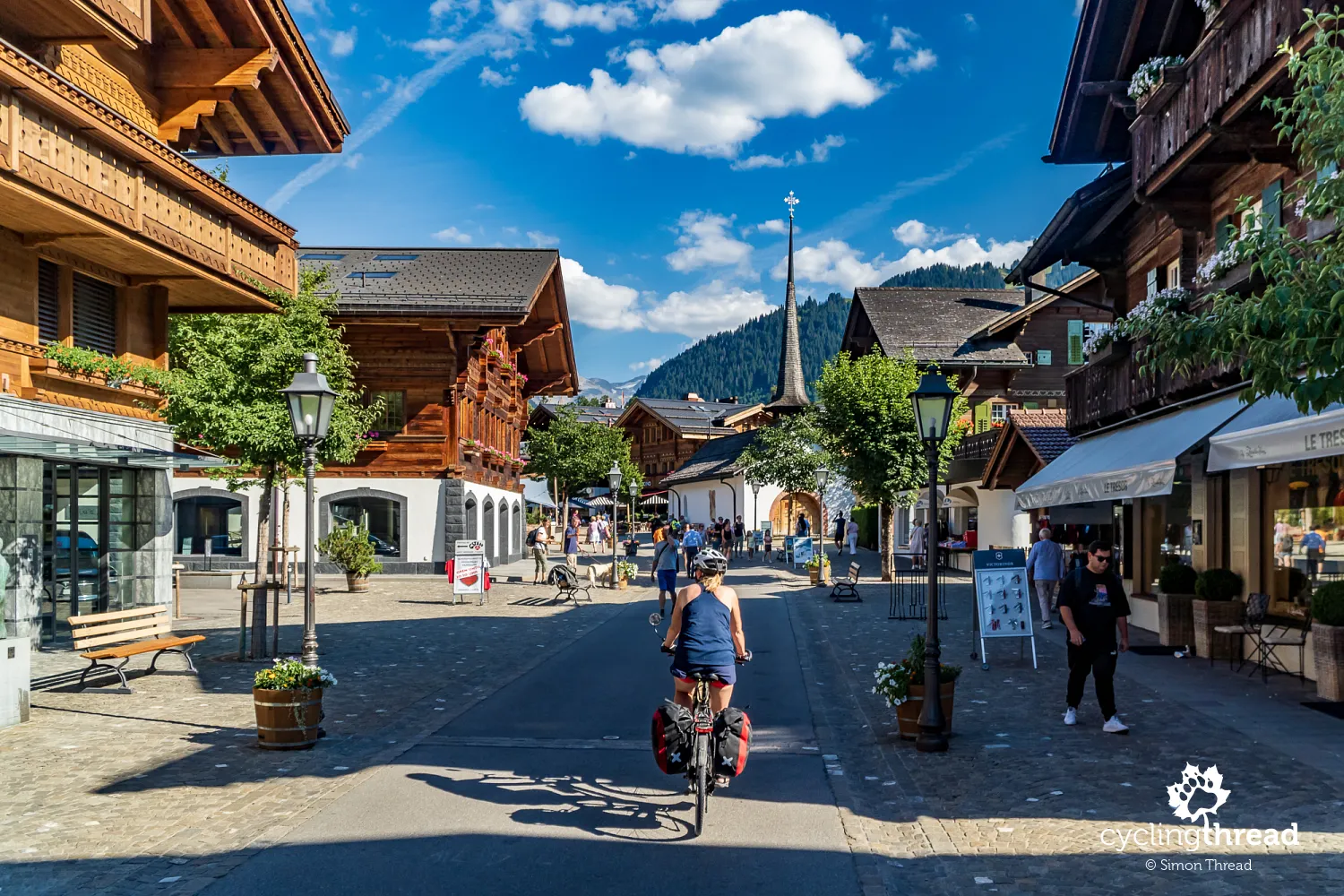
Rougemont among Switzerland's most beautiful villages
The day ended on a high note in Rougemont, considered one of Switzerland’s most beautiful villages. Cycling through Rougemont felt like a festival of traditional local wooden architecture. Some buildings are nearly 400 years old, with facades adorned with carved or painted motifs, images, and ornaments. Naturally, well-tended flowers, flower beds, and shrubs complemented the village’s charm. At the edge of Rougemont stands a former abbey with an 11th-century Romanesque church and a 16th-century castle built on the site of the monastery. The church interior impressed us not only with its refined ornamentation paired with Romanesque austerity but also with its subtle, colorful lighting activated by visitors and then automatically turned off. By the way, did I mention that most of these beautiful Romanesque churches are open for exploration? Rougemont could also serve as an excellent base for winter skiing, with a cable car connecting the village to the Gstaad ski resort.
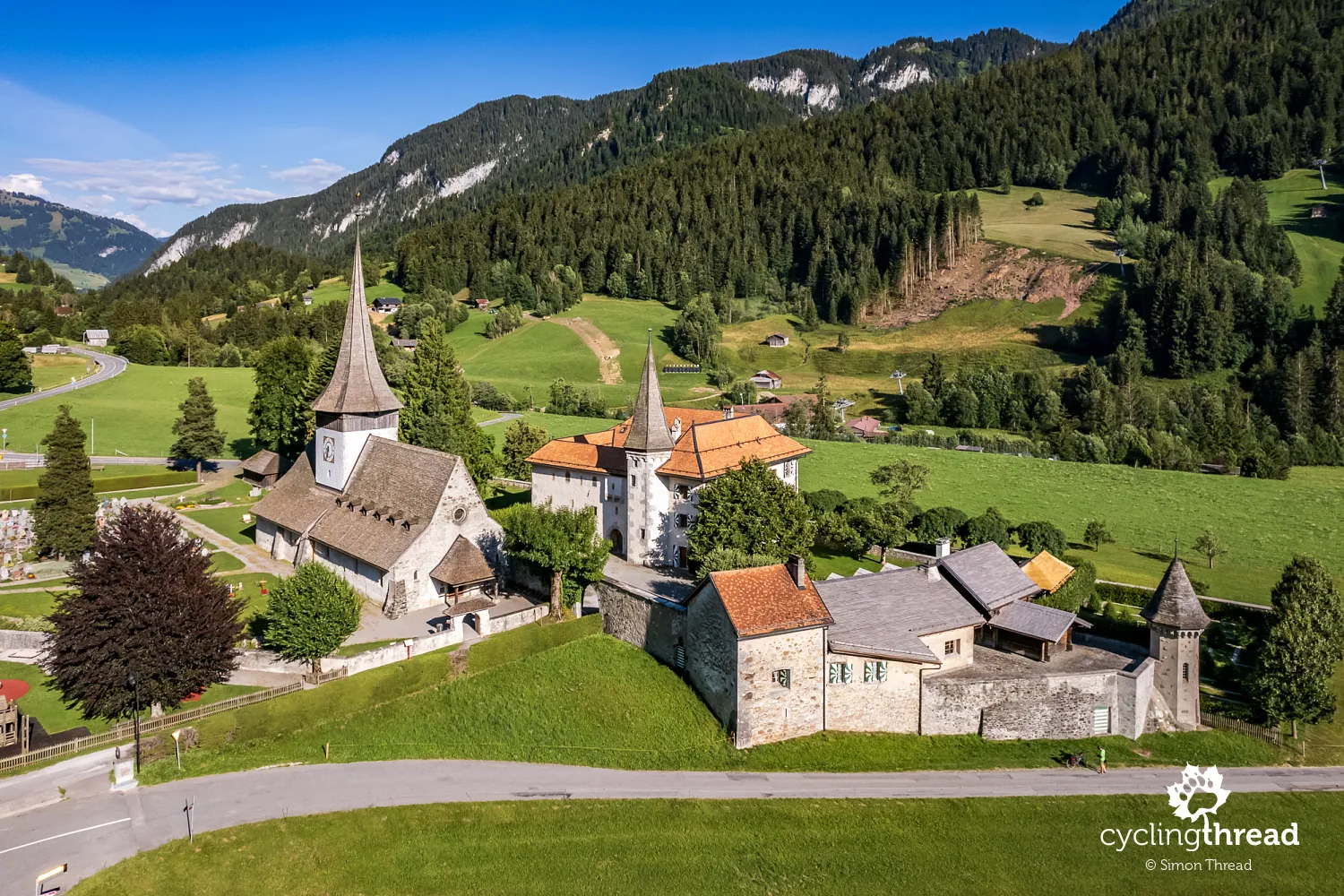
A night in Swiss agritourism
As we headed to Château-d’Oex, we were curious about our upcoming stay at an agritourism farm. It turned out to be an authentic working farm on the outskirts of the village, complete with typical agricultural aromas and a yard filled with farming equipment. Far from being bothersome, this setting was quite the opposite - we enjoyed cycling through the yard and into a cozy, wood-finished interior typical of many guesthouses or agritourism farms. The next morning, over a delicious breakfast made entirely from local products, we learned that our host was the head of a local agritourism association, working to promote this type of accommodation in Switzerland. Unfortunately, the cost of our agritourism stay was only slightly less than that of hotels or guesthouses in the area. Perhaps in Switzerland, agritourism is not synonymous with budget accommodation?
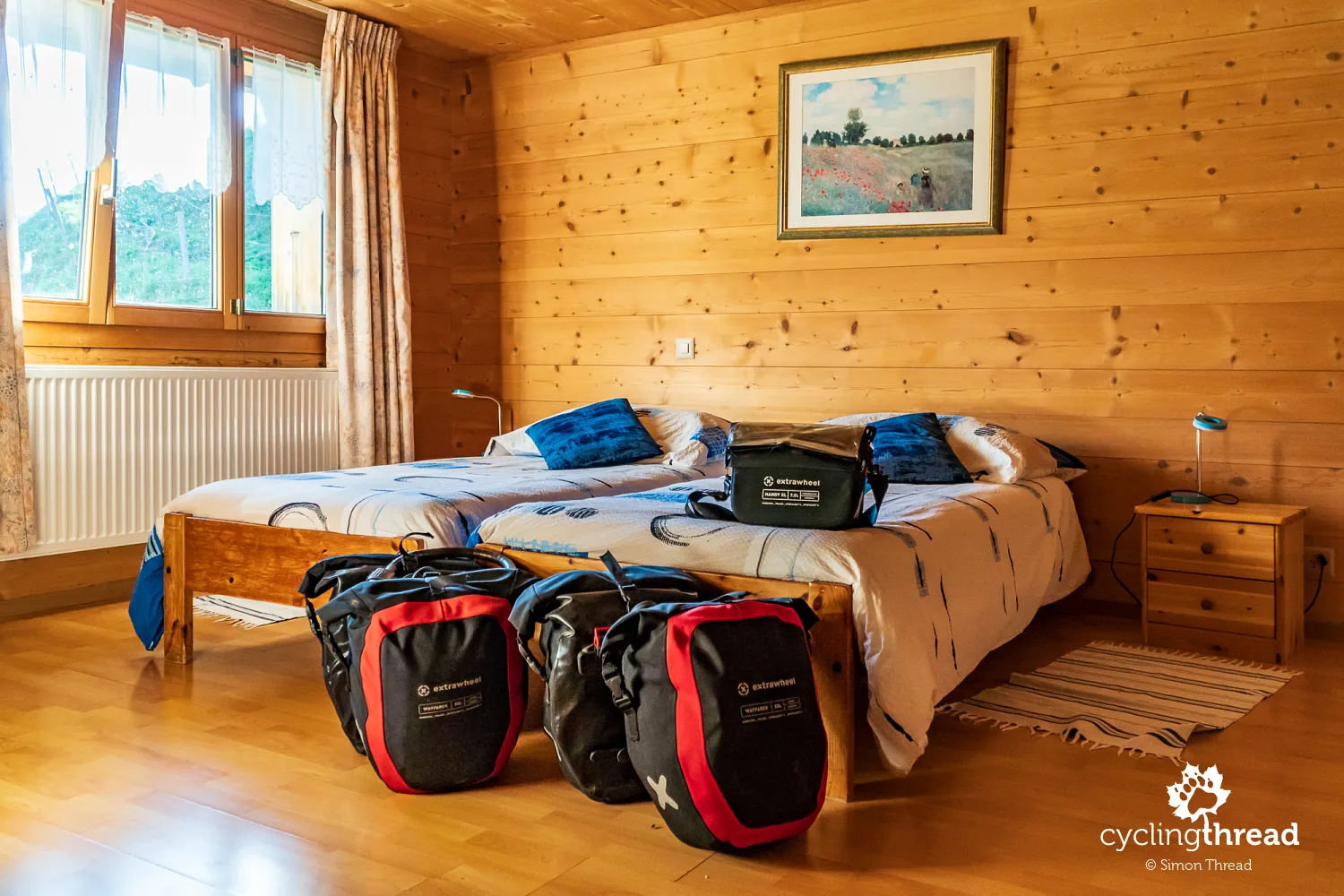
No cyclist-friendly places in Switzerland
Switzerland doesn’t have its own list of cyclist-friendly places like bike hotels or guesthouses, but we didn’t face many issues storing our bikes. Most accommodation options aren’t surprised by the sight of cycling tourists. Our nights were spent in various places, including an affordable guesthouse in Meiringen, a comfortable hotel in Spiez, and a charming agritourism farm in Château-d’Oex. However, it’s a good idea to have a secure lock with you, just in case you’re asked to leave your bikes, for example, in a guesthouse courtyard.
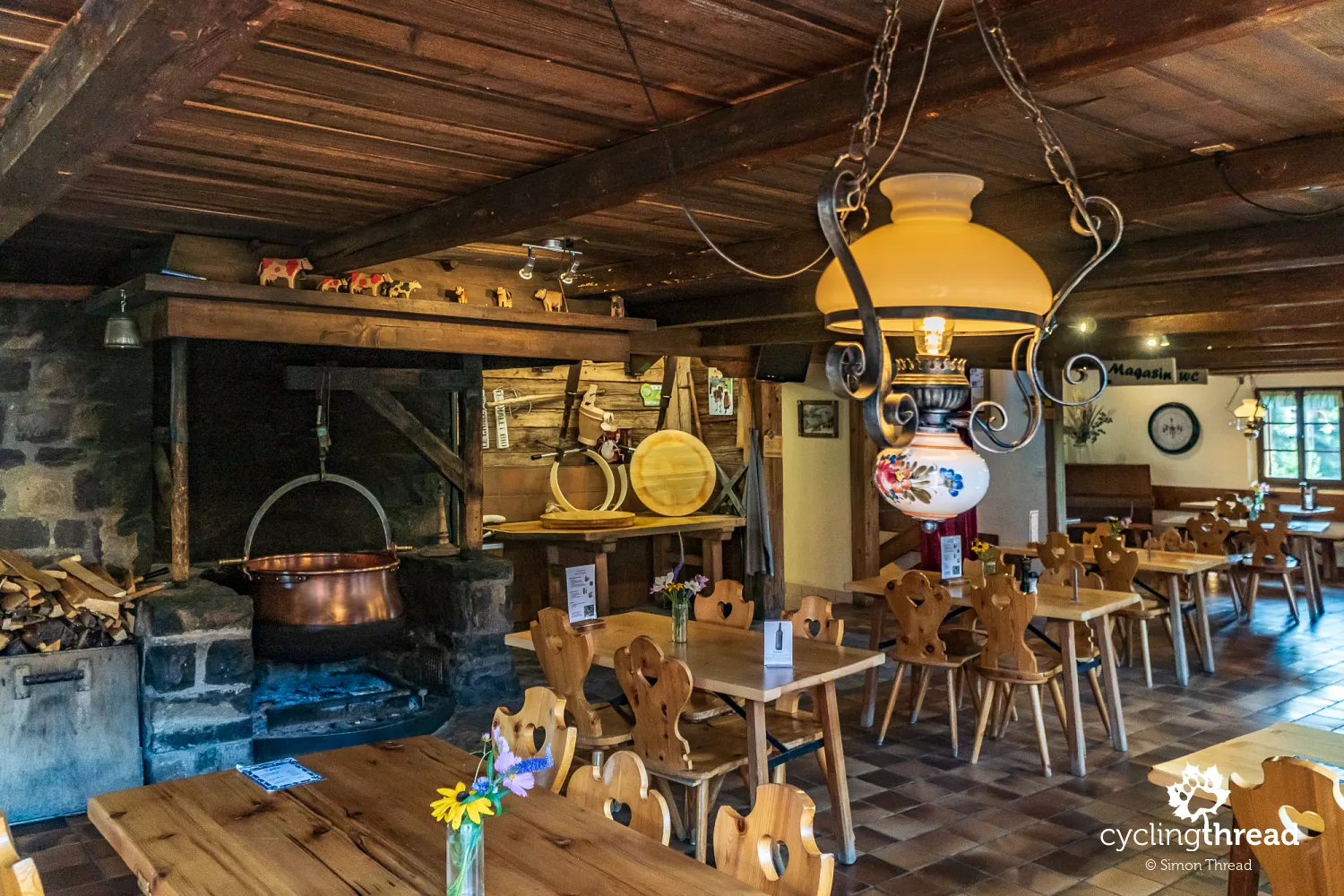
The ballooning capital of Switzerland - Château-d’Oex
Château-d’Oex is yet another delightful Swiss town. It stands out for its excellent conditions for ballooning, provided by the surrounding slopes. It was from here in 1999 that Swiss explorer Bertrand Piccard (son and grandson of other famous Swiss adventurers) and Englishman Brian Jones embarked on a journey around the world in a balloon. Over three weeks, they traveled more than 40,000 kilometers, setting a record for the longest distance ever covered in a balloon without landing. Reflecting on the clear skies of the previous day and the air’s atmosphere, it was easy to imagine how the sun could create ideal thermal conditions for such activities in these alpine valleys and basins. However, we preferred the firm ground and our place on a bike saddle rather than a basket suspended hundreds of meters above the ground. For those curious about the world of ballooning, Château-d’Oex offers Espace Ballon - a small museum dedicated to balloon sports and the remarkable journey of Piccard and Jones.
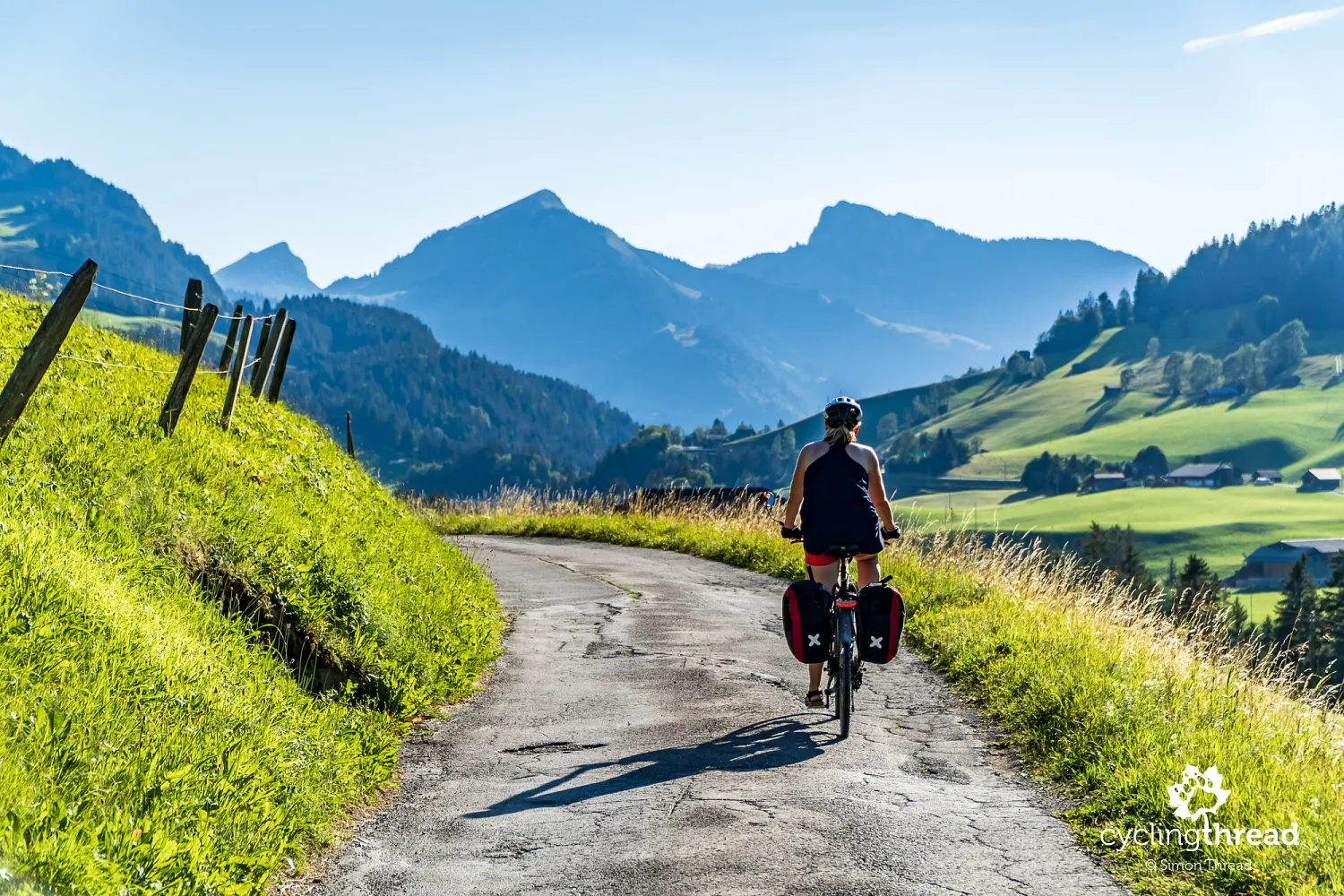
A stop on the flagship Grand Tour of Switzerland
Château-d'Oex serves as a hub for the Gruyère Pays-d’Enhaut Regional Nature Park, recognized as a “stop” on the Grand Tour of Switzerland, a flagship car-based tourism route showcasing Switzerland’s most stunning corners. Although primarily designed for drivers of cars and campervans, cyclists can use it as a fantastic overview of must-see attractions - a sort of Swiss “cultural canon.” The Grand Tour of Switzerland comprises 10 routes through various regions, featuring 46 attractions, 22 lakes, five mountain passes, and as many as 13 UNESCO World Heritage Sites. At every designated stop, you’ll find a charming red frame encouraging visitors to snap souvenir photos and build a collection of images from Switzerland’s most beautiful locations. The routes and attractions of the Grand Tour are detailed in a free PDF guide available on the website myswitzerland.com.
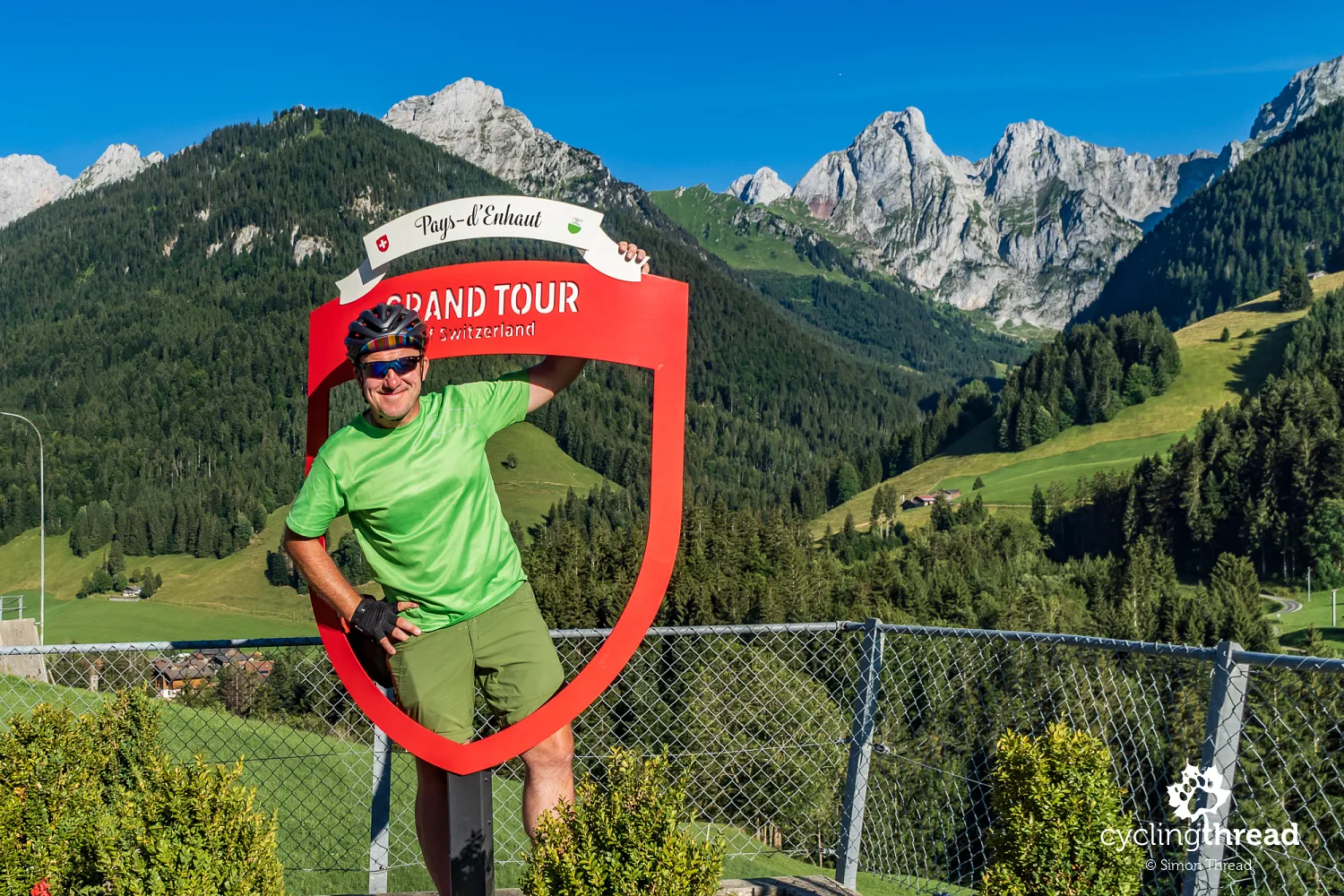
French to the left, German to the right
The landscapes of the Gruyère Pays-d’Enhaut Nature Park accompanied us for the first 30 kilometers of the day’s ride. Our route continued through the valley of the Sarine River, which cuts through the Fribourg Alps and forms the backbone of the historic Gruyères region. Known as Saane in German and Sarine in French, the river also serves as a linguistic border between French- and German-speaking areas of Switzerland. The phrase “outre Sarine” (“beyond Sarine”) is even used by French-speaking Swiss to refer to the German-speaking part of the country. Most of this section followed delightful, narrow asphalt roads winding along the undulating eastern slopes of the wide valley, offering stunning views of the jagged panoramas of the Fribourg and Bernese Alps. Along the way, we passed through Grandvillard - another of Switzerland’s most beautiful villages, surrounded by chapels and under the watchful gaze of circling red kites - before reaching Gruyères.
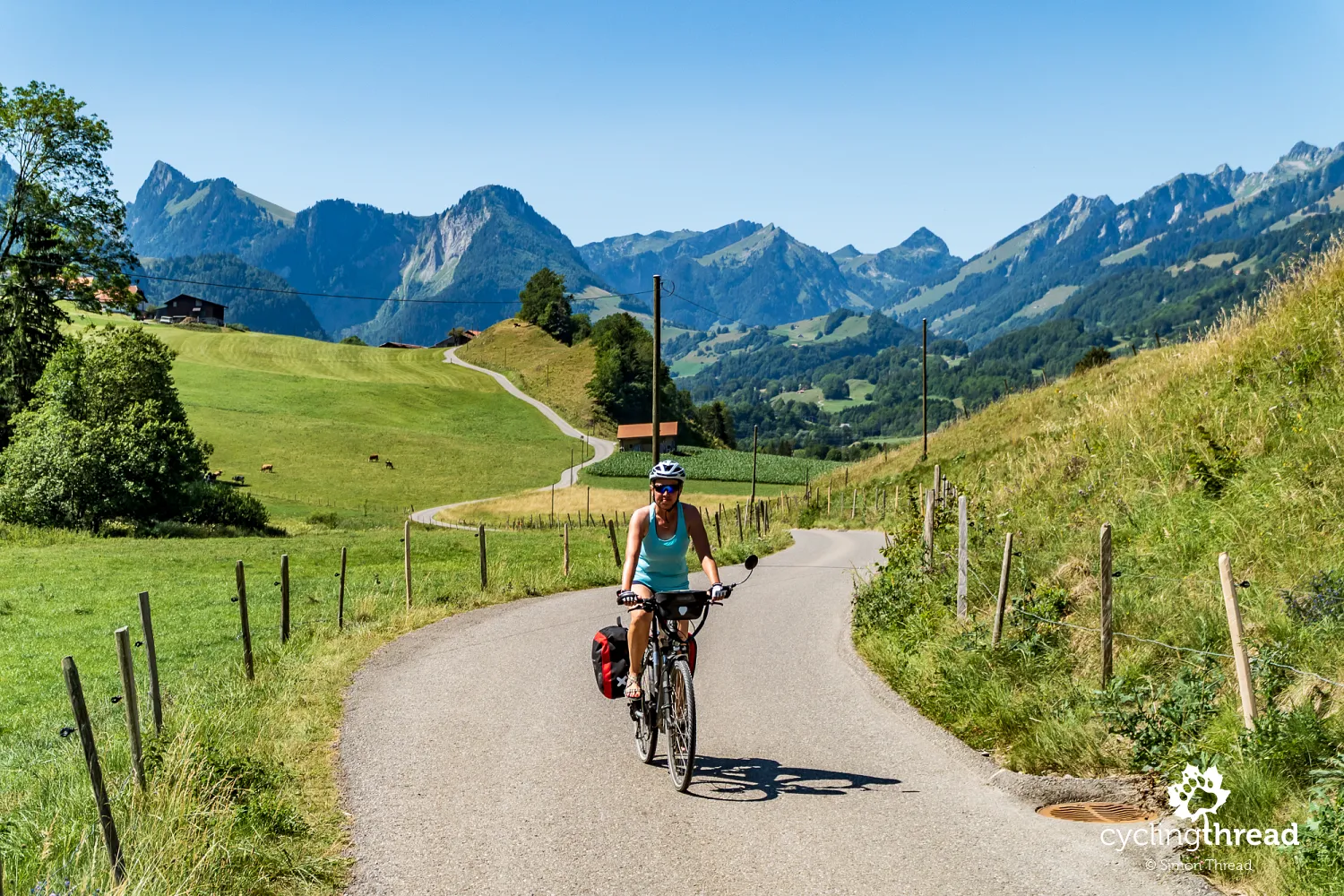
Birthday fondue with Gruyère cheese
At the end of this leg, we arrived at perhaps the most delicious stop on our journey and yet another example of swisstainable travel - a visit to the Gruyère dairy, where the world-renowned Gruyère cheese is produced. Every day, 36 local farmers deliver milk to the dairy, which produces up to 48 wheels of cheese daily. Visitors can learn about the production process during a half-hour tour of the production area, after which the best thing to do is sit outdoors in the company’s cozy yet unpretentious restaurant. As it happened, we were there on my birthday, and celebrating with fondue made from Gruyère cheese was the perfect way to mark the occasion. The table included all the essentials: a special fork for dipping bread, vegetables, or meat into the melted cheese, and pepper, a traditional accompaniment to this classic Swiss dish. We reminisced about last year’s rainy birthday “party” under a shelter on the railway cycle route in Hesse, Germany.
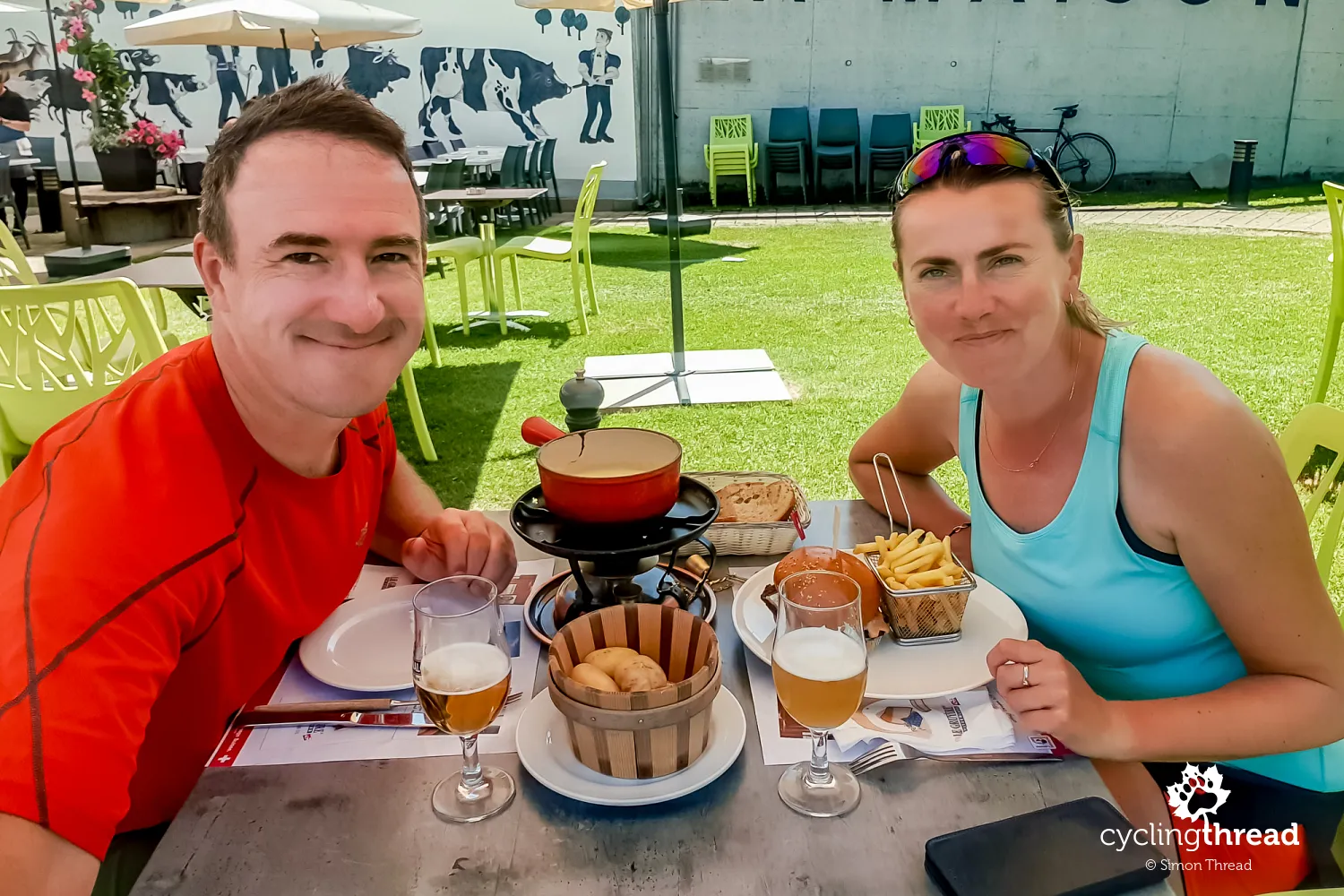
Gruyères - castles, aliens, and the Tibet Museum
The Gruyère dairy isn’t located in Gruyères itself but in Pringy, a village at the foot of Gruyères. “At the foot” because Gruyères is a beautifully preserved hilltop castle complex comprising two castles and an adjacent “bailey,” shaped like a short town square surrounded by 16th- and 17th-century houses. The entire village is enclosed by walls and free of motor traffic. Interestingly, many visitors come not for the larger Château de Gruyères, which dates back to the late 13th century, but for the smaller Château St. Germain. This castle houses a gallery of works by H.R. Giger, the late Swiss artist who won an Oscar for his design of the alien and the cosmic set of the film *Alien*. Other attractions in tiny Gruyères include the Tibet Museum, the Fondue Academy, a Swiss chocolate factory, and numerous eateries serving regional specialties.
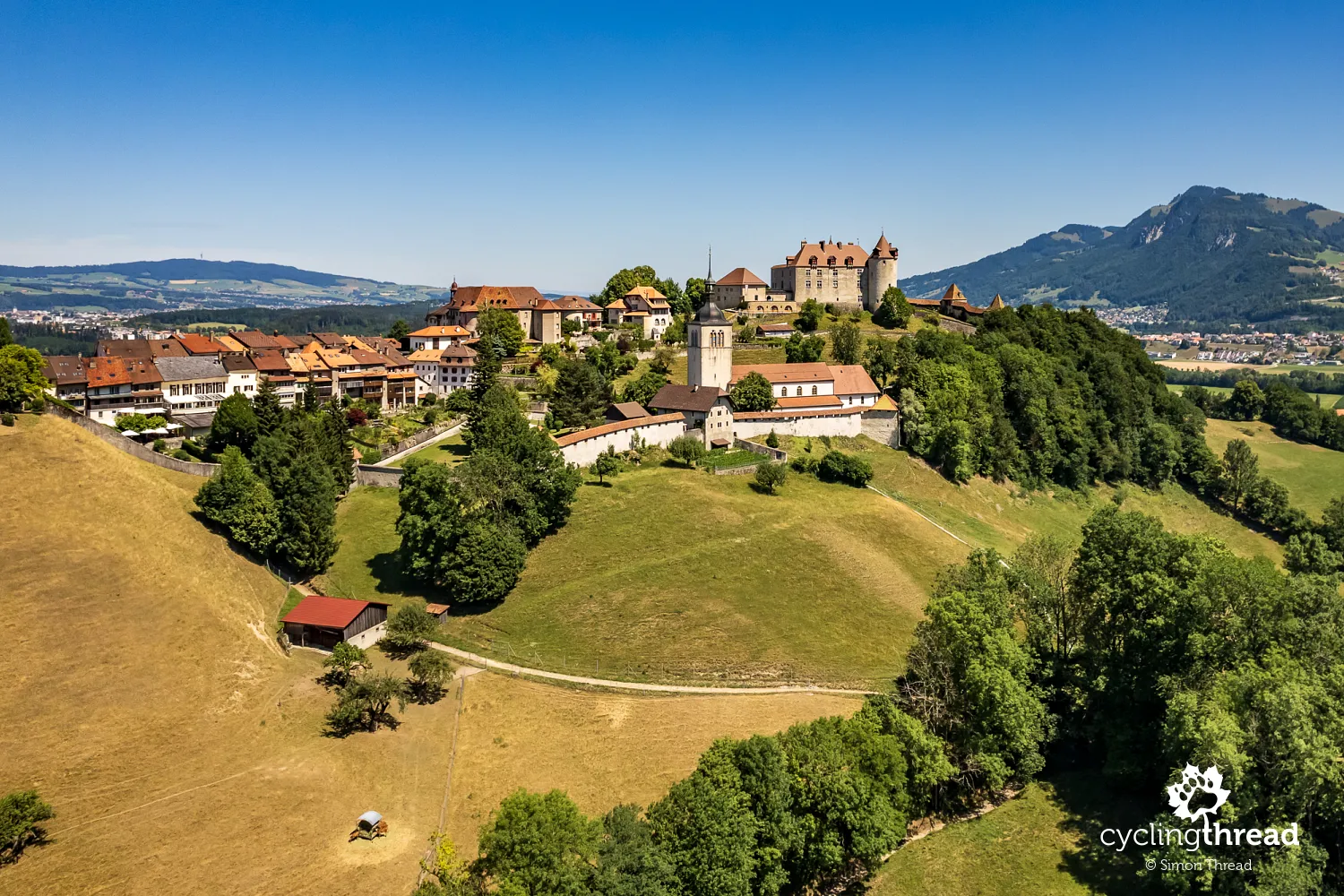
Even the best routes have weak links
It’s never the case that a route is all about raving reviews and great memories, and the Lakes Route had its letdown. The stretch from Bulle to Châtel-Saint-Denis, before Lake Geneva, drained us to the point where… I’m now realizing it was barely over 20 kilometers, though at the time it felt like 40 or 50 tedious, uphill-and-downhill kilometers against a strong headwind, with no interesting scenery or convenient water refill stops. It’s no wonder we celebrated our arrival in Châtel-Saint-Denis with a break at a café next to a supermarket, thrilled that only a few kilometers remained before the descent to the breathtaking Lake Geneva. Then again, 20 dull kilometers out of nearly 350 isn’t bad, is it? Incidentally, the Swiss cycling website *Switzerland Mobility* recommends tackling the Lakes Route in the opposite direction - perhaps our impression of this section would have been different in reverse.
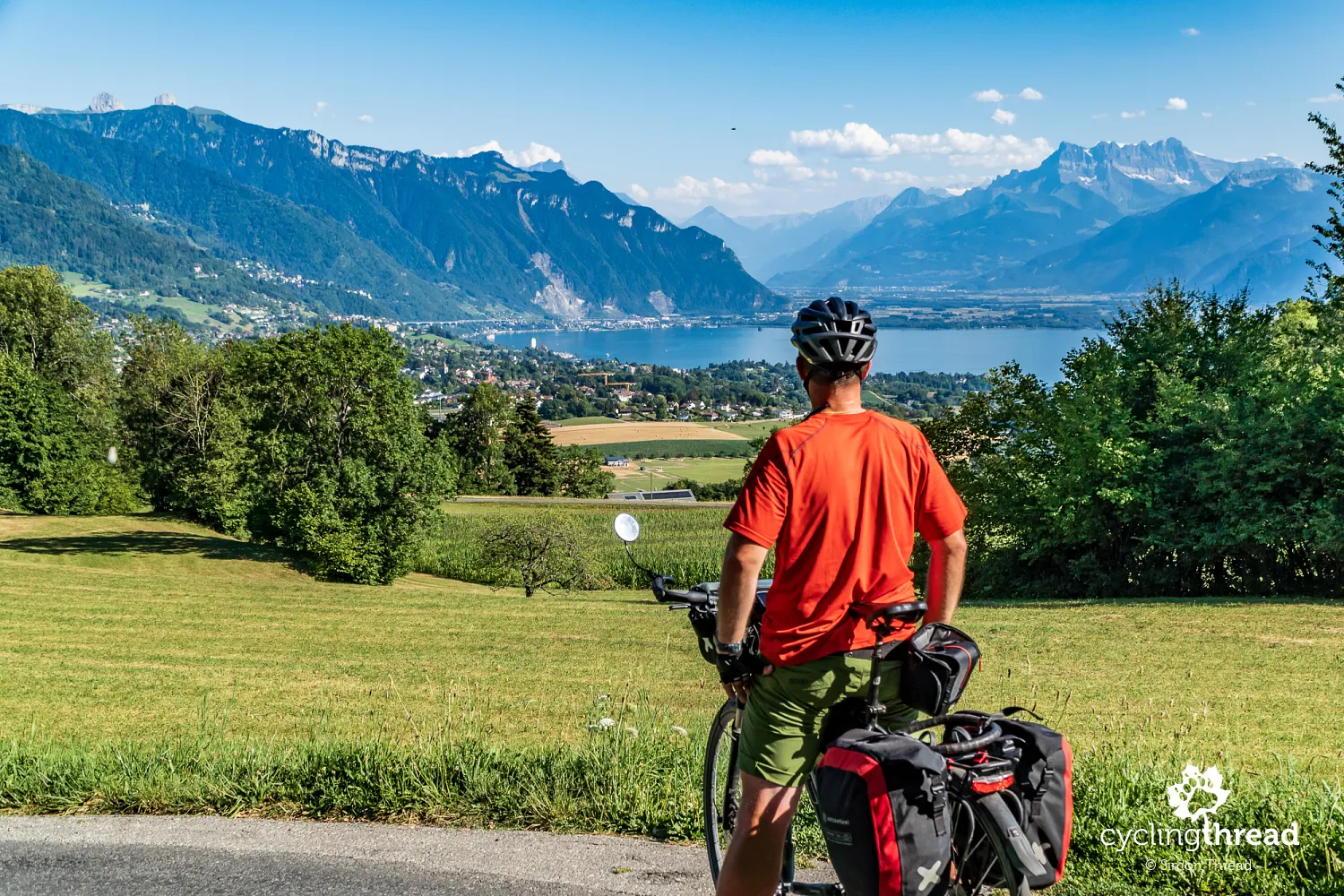
A stunning cycling route through extraordinary vineyards
The official Lakes Route concludes in Montreux after passing through Vevey. However, like at the start of our journey, we modified the final kilometers. Instead of heading east to Montreux, we cycled west along Lake Geneva toward Lausanne, following the signs for national cycling route no. 1, the Rhône Route. This was a better choice for us logistically - Lausanne is closer to Nyon, where we were to begin the Jura Route - and it allowed us to see more of Lake Geneva. This turned out to be a fantastic decision because just past Vevey, we entered the Lavaux vineyards. Here, we found one of the most stunning stretches of a cycling route we’ve ever experienced! Riding along a path on stone terraces on a fairly steep hillside, surrounded by vineyards under a brilliantly blue sky and the blazing sun, was extraordinary. If not for the day nearing its end and the remaining distance to cover, we might have lingered, soaking up the incredible atmosphere of this place.
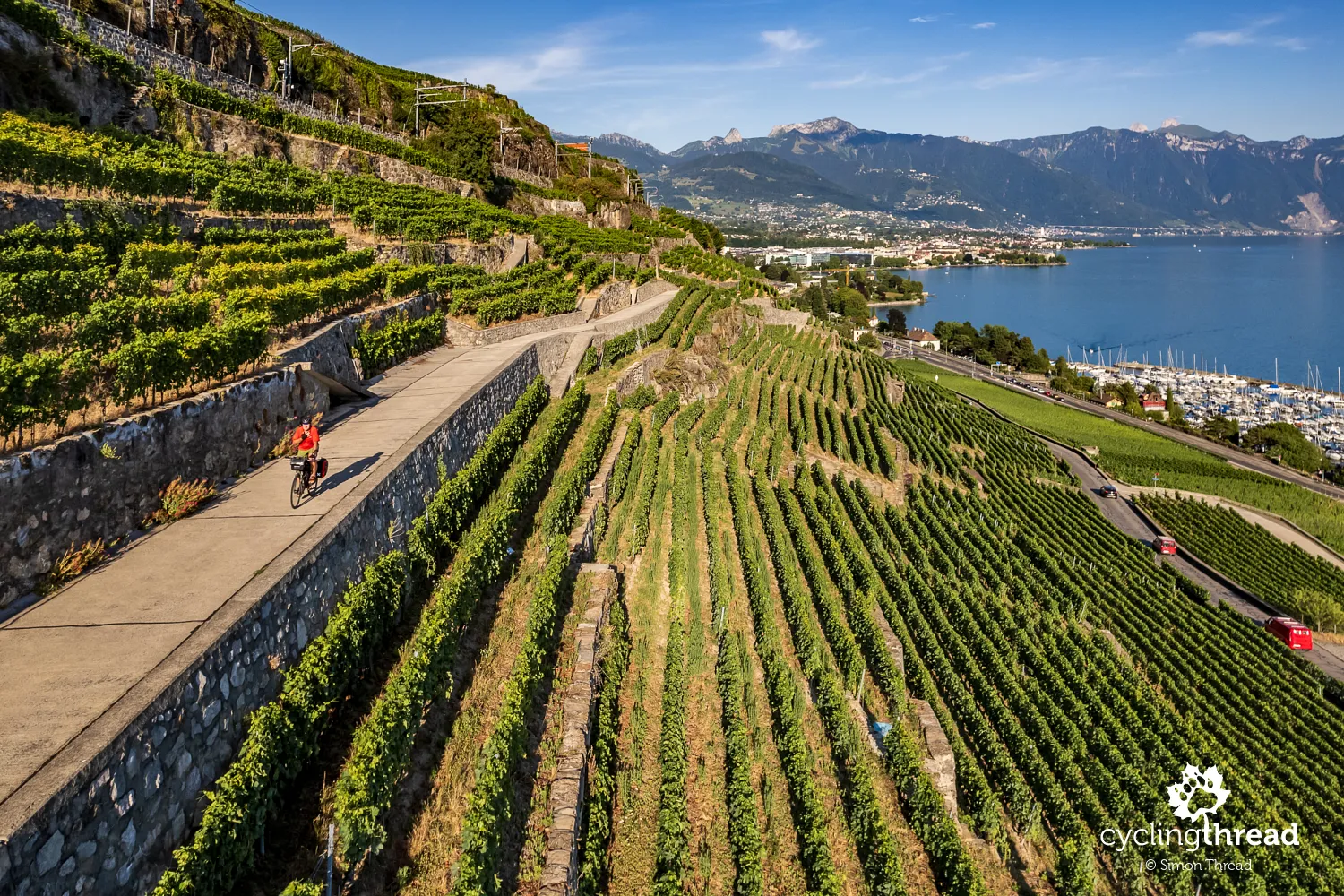
The three suns of Lavaux vineyards
The Lavaux vineyards, inscribed on the UNESCO World Heritage List, owe much of their charm to a local belief shared by the generations of winemakers cultivating this region. They attribute the exceptional quality of wines produced here to the warmth provided by "three suns." The first is the actual sun, rising daily over Lake Geneva and bathing the vineyards in its energy. The second "sun" is the sunlight reflected off the lake's surface, which illuminates and warms the vines from below, reaching spots untouched by the direct rays. The third is the heat radiated at night by the sun-warmed stone terraces, creating a microclimate that extends warmth beyond the prevailing weather conditions. This unique combination of natural factors, coupled with the stunning aesthetics of the area and the thoughtfully designed cycling paths, made Lavaux the most beautiful spot of our entire trip.
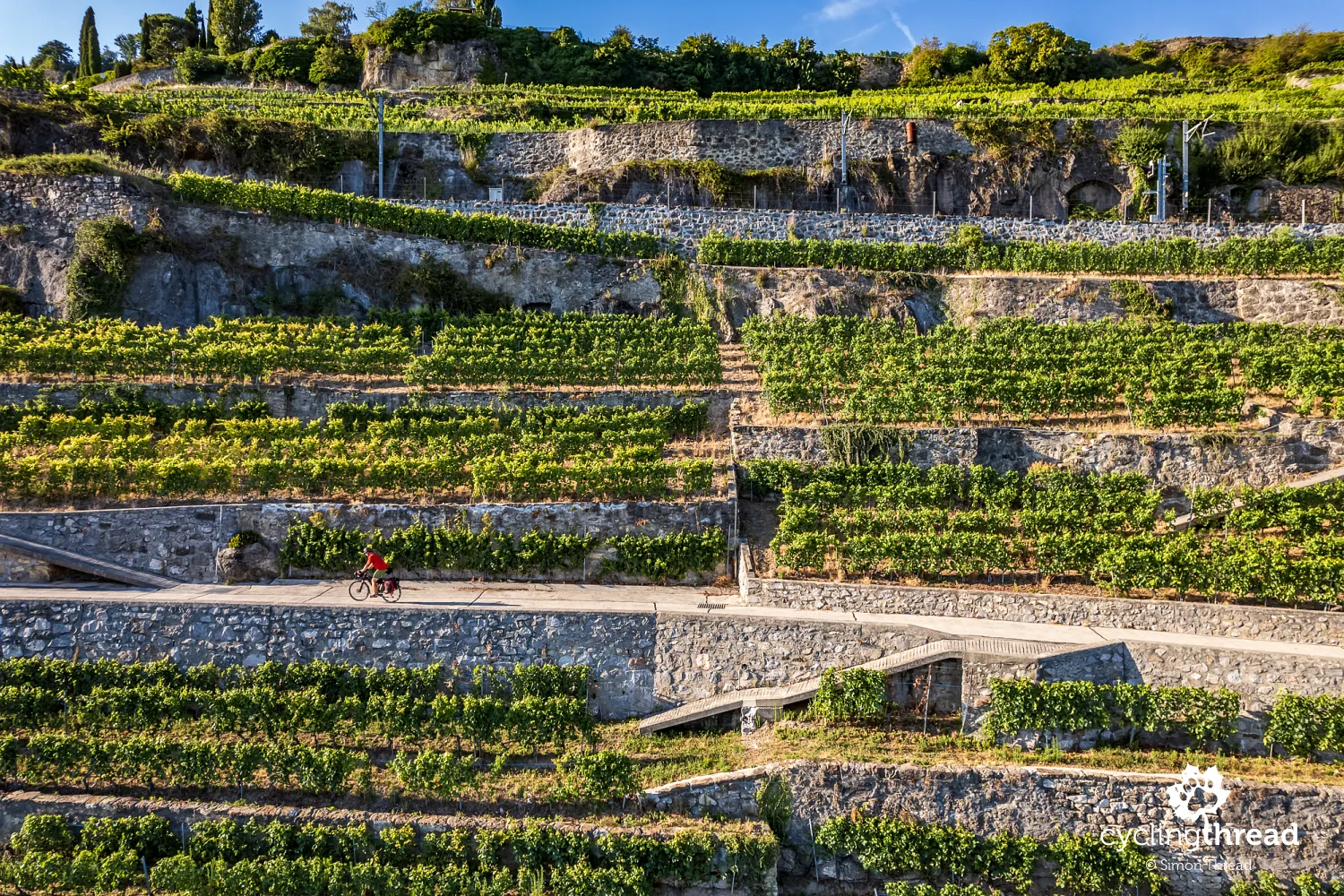
Olympic Lausanne - the perfect finale
Just as Zurich was an excellent starting point for our Swiss cycling adventure, Lausanne proved to be an equally fitting conclusion. The journey to our apartment, located opposite Lausanne’s town hall, reminded us of Zurich with yet another steep city climb. Between the lakeside and the city center, we tackled 120 meters of elevation gain on streets with gradients of 5-6%. The choice of accommodation turned out to be a bullseye - two days immersed in the lively atmosphere of Place de la Palud, the heart of the city, which was adorned with a giant Swiss flag by the proud locals. Just around the corner were the historic Escaliers du Marché, covered steps mentioned as far back as the 13th century, leading to the Notre Dame Cathedral perched above the old town.
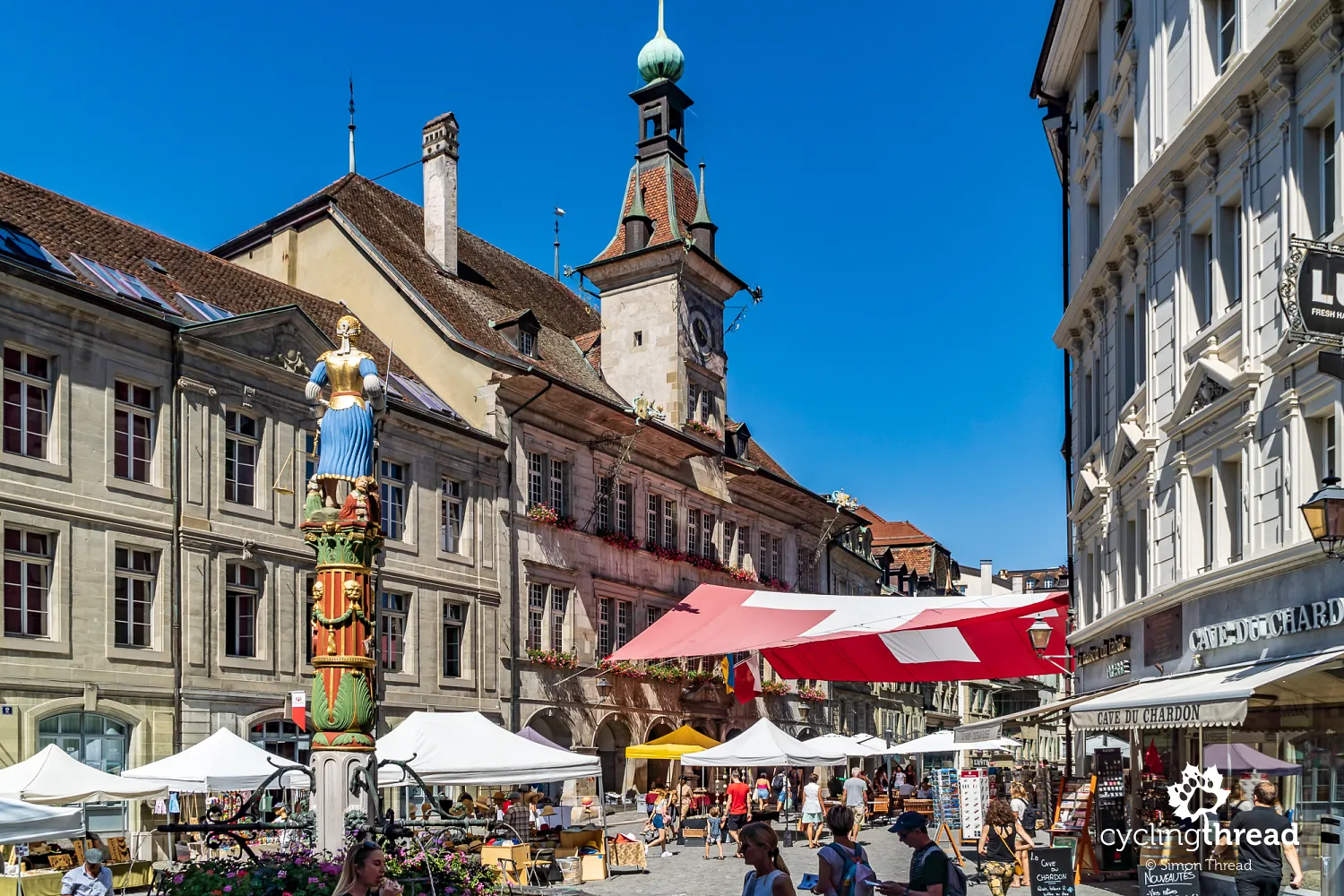
The Olympic Museum in the global capital of sports
Lausanne is perhaps unmatched in Europe in its association with sports, a reputation reinforced by frequent mentions during ceremonies and draws for major international events. This status stems from its role as the headquarters of the International Olympic Committee (IOC) and 58 other global and European sports federations, representing popular disciplines like football, cycling, basketball, archery, table tennis, fencing, boxing, and rowing. The Olympic spirit of the city is emphasized by a sign at the Lausanne train station welcoming visitors to the "Olympic Capital," a phrase also featured on the city’s website and promotional materials. Naturally, our must-see attraction was the Olympic Museum, spectacularly situated on the slopes above Lake Geneva.
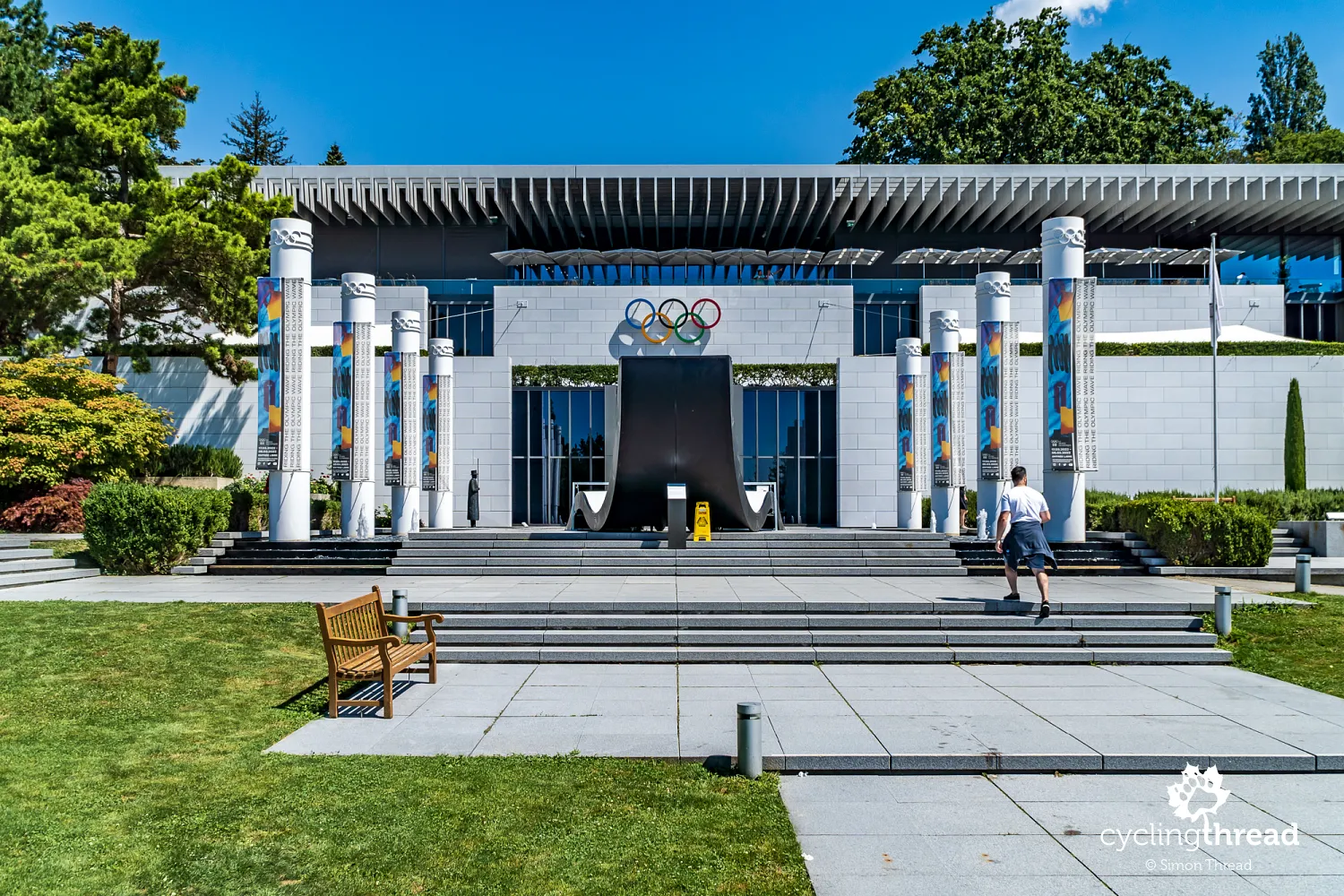
Inside the museum, we delved into the history of the Olympic movement, beginning with an exhibit on Pierre de Coubertin, the founder of the IOC, and continuing through an array of artifacts, presentations, and films. Highlights included a collection of Olympic torches, mascots, and medals from all the Games, showcasing the evolution of global design trends. Even if you're not a sports enthusiast, the Olympic Museum in Lausanne is a place that will make you pause for a moment during your cycling journey through Switzerland.
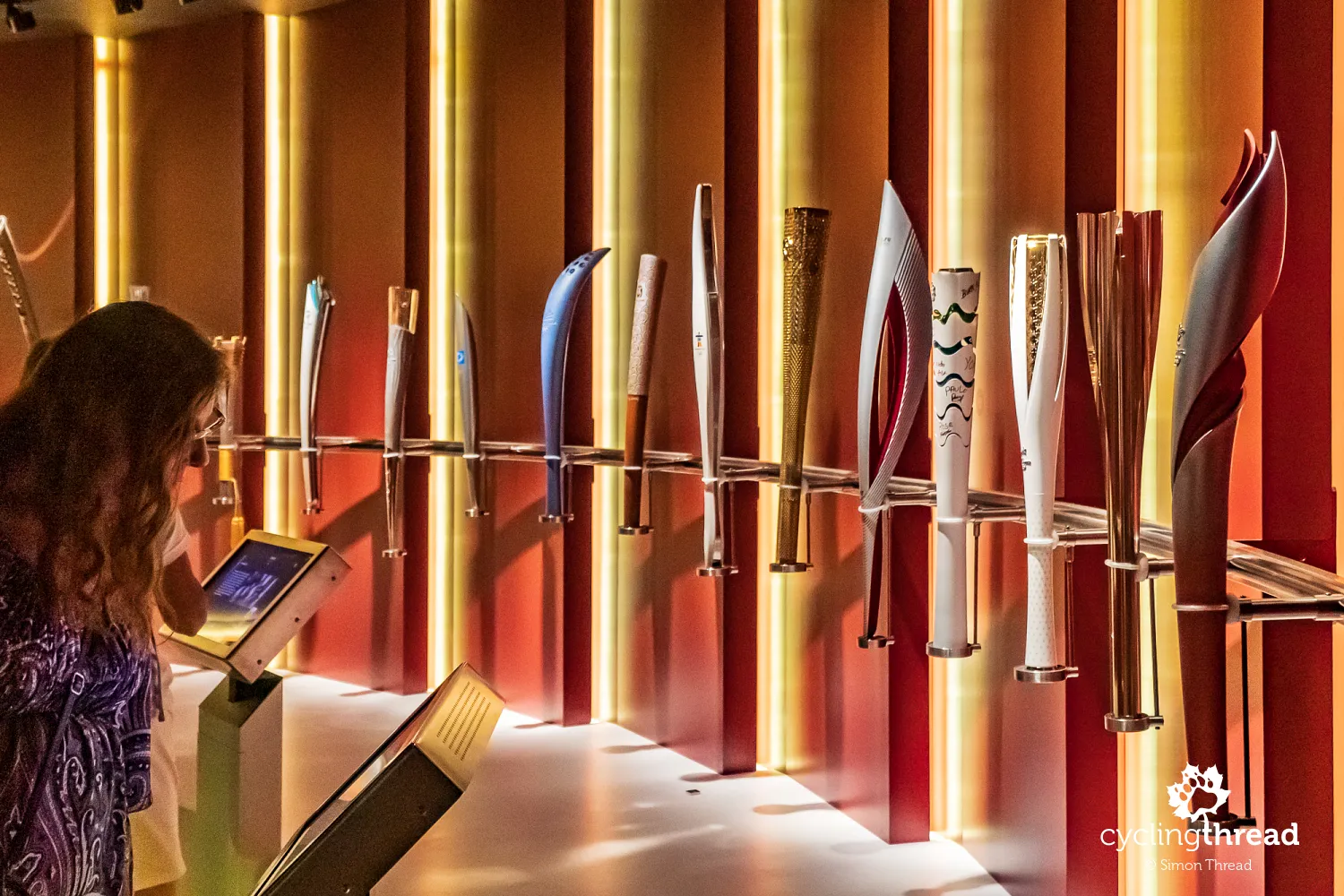
Six days aren’t enough for the Lakes Route
We allocated six days to cover the approximately 350 kilometers of the Lakes Route, including a day in Zurich. From a post-trip perspective, it’s clear this was at least two days too short. Extra time would have allowed us to explore more attractions in Lucerne and Lausanne, where half a day, or better yet, a full additional day, would have been ideal. Switzerland, after all, is a fascinating country, rich in contemporary attractions, regional traditions, and historical treasures. However, the decision to plan stages of about 70 kilometers each day, dictated by the availability of accommodations, worked well. This distance allowed us to explore interesting sites along the way while maintaining a reasonable level of physical effort.
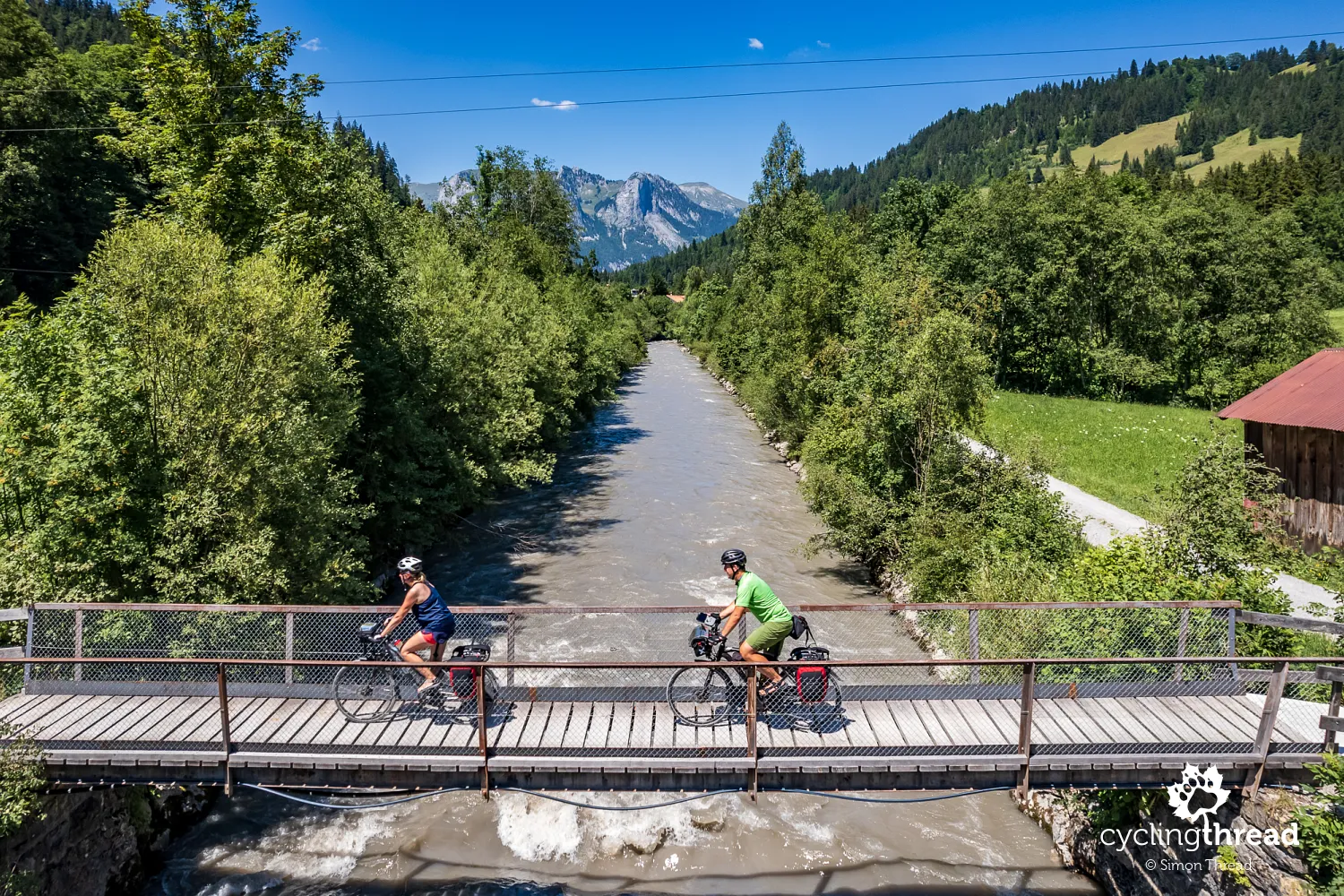
Rhine Route, Lakes Route, Jura Route…
Sitting on a train from Lausanne to Nyon, where our next short Swiss cycling adventure began, I wondered if the Lakes Route might surpass the Swiss section of the Rhine Route, which I’ve often called the most beautiful in Europe. Perhaps they should share the top spot on our list of Europe’s best cycling routes. The Rhine Route has its magnificent moments and traverses four types of Swiss landscapes, while the Lakes Route is more cohesive and offers perhaps greater pleasure in its tranquil Alpine valleys. And what about the Jura Route? Check out our next travel story from Switzerland to find out!
Back to topHave a safe ride! 💚
Simon Thread
(Szymon Nitka)
I'm a passionate cycling traveler and the voice behind Cycling Thread. I explore Europe on two wheels, documenting the most scenic routes, inspiring places, and cyclist-friendly practices. My writing blends personal experience with practical insights and a deep love of travel. I'm also a contributor to National Geographic Traveler magazine.



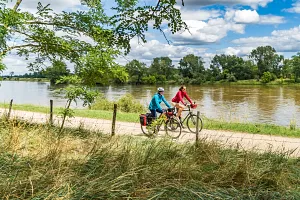
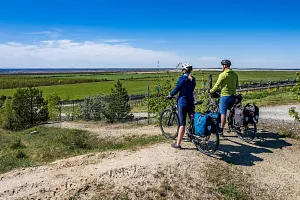

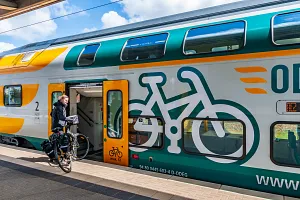
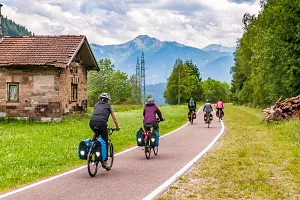
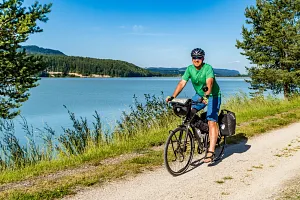
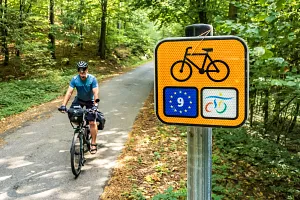
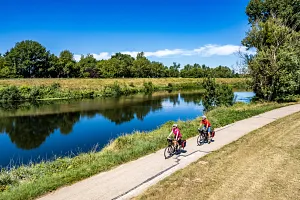
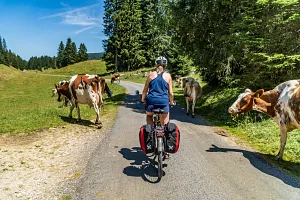
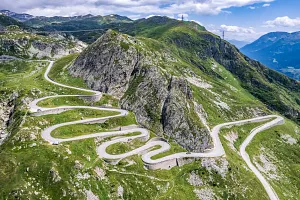
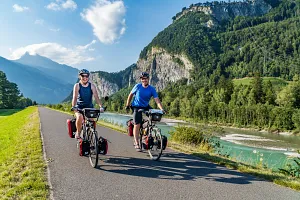
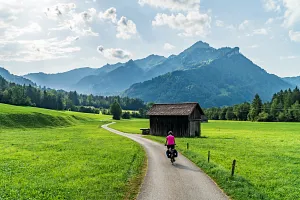
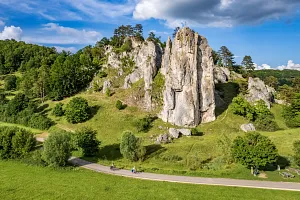
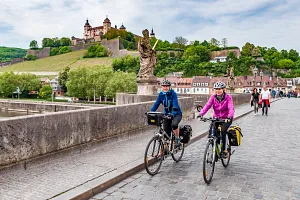
Your Comments
Add new comment